Best SUVs in India 2023-24 – Price, Specifications, Mileage, Colors, Images
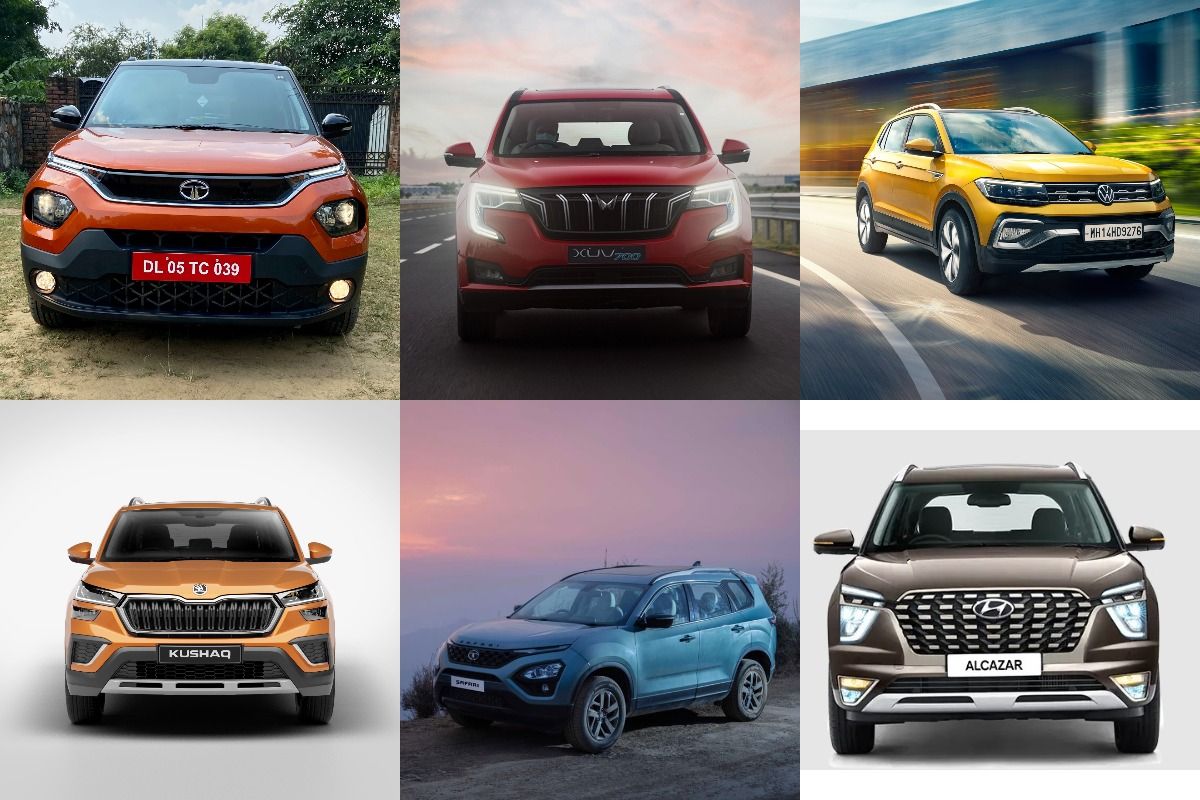

Due to the ideal balance of style, comfort, space, and performance they provide, SUVs are currently dominating the Indian automotive market. With some of the best SUVs available in India, including the Tata Nexon, Hyundai Creta, Mahindra XUV700, and Toyota Fortuner, these vehicles can meet any need in the automotive industry in a variety of price ranges. If you’re considering purchasing an SUV in India, these are your best options.
| Model | Price (Ex-Showroom Price) |
| Tata Punch | Rs. 5,92,900- Rs. 9,48,900 |
| Tata Nexon | Rs.7.70 Lakh- Rs. 14.18 Lakh |
| Hyundai Venue | Rs.7.53 Lakh- Rs. 12.72 Lakh |
| Kia Seltos | Rs. 10.49 Lakh- Rs. 18.65 Lakh |
| Mahindra Scorpio N | Rs. 11.99 Lakh – Rs. 23.90 Lakh |
| Mahendra XUV 700 | Rs. 13.45 Lakh- Rs. 24.95 Lakh |
| Skoda Kushaq | Rs. 11.59 Lakh- Rs. 19.69 Lakh |
| Tata Safari | Rs. 15.45 Lakh- Rs. 23.76 Lakh |
| MG Gloster | Rs. 30.00 Lakh- Rs. 40.78 Lakh |
| Toyota Fortuner | Rs.32.58 Lakh- Rs. 50.34 Lakh |
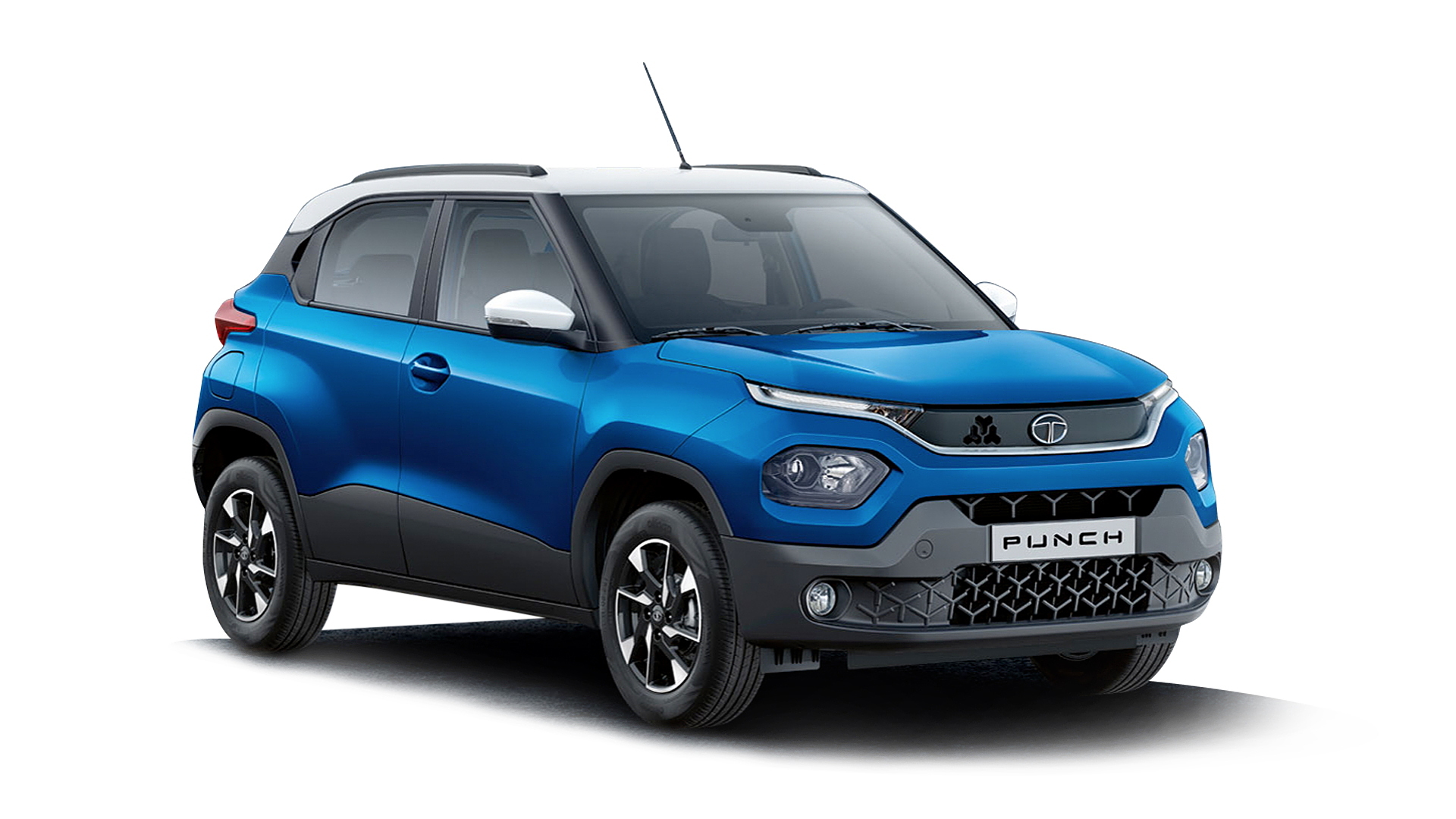
The brand-new Punch is the newest in the range of Tata automobiles. The Tata Punch, a compact crossover SUV, has been causing a stir in the market since it was introduced last year. Few automobiles, if any, actually really create a lasting impression in a market already overrun with alternatives. The Tata Punch will be well-liked by many because of its appealing cost, unusual style, long list of amenities, and high safety rating.
| Tata Punch Variants |
| Punch Pure MT |
| Punch Pure Rhythm Pack MT |
| Punch Adventure MT |
| Punch Camo Adventure MT |
| Punch Adventure AMT |
| Punch Camo Adventure AMT |
Absolutely, there are a tonne of variations and trimmings! In addition to Grassland Beige, Tornado Blue, Calypso Red, Meteor Bronze, Atomic Orange, Tropical Mist, Daytona Grey, and Orcus White, the Tata Punch’s exterior comes in these hues as well. The Tata Punch’s roof may be painted either Black or White depending on the colour chosen.
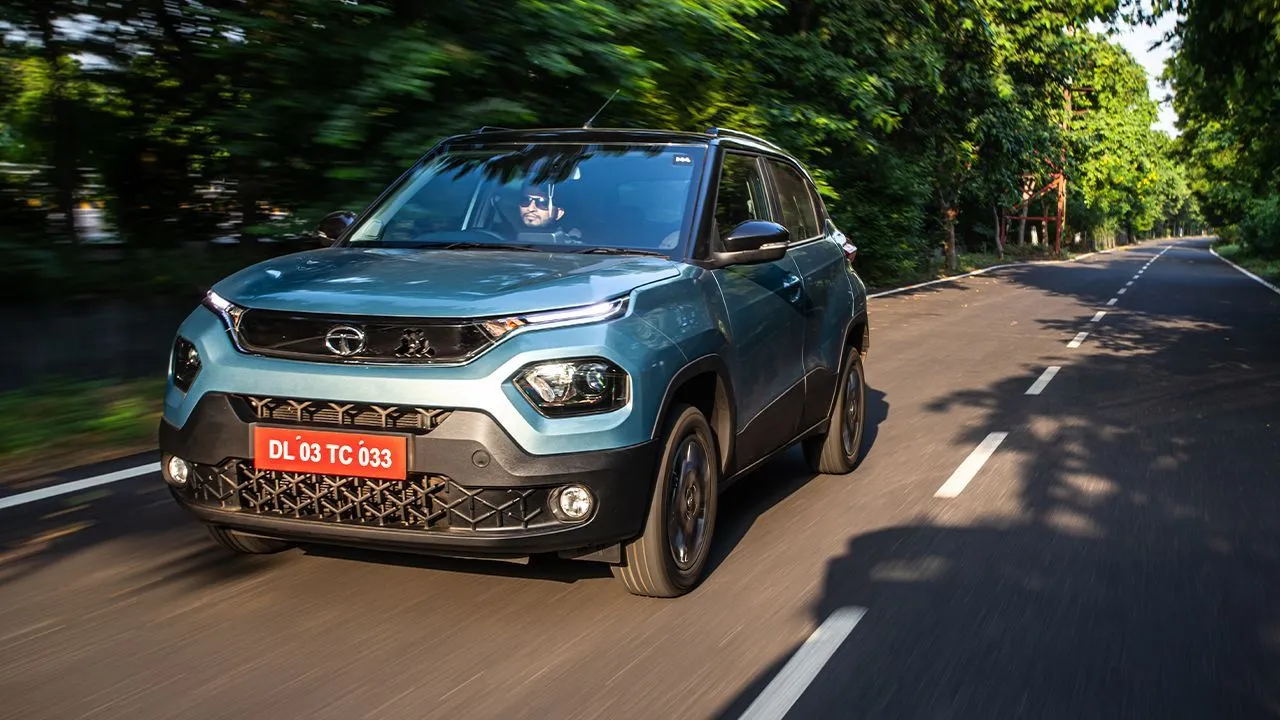
Tata wouldn’t object in the slightest if you thought the front end of the Punch resembled a smaller but combined versions of the Harrier and Nexon. The Punch’s front presents a butch and erect attitude, and its muscularity is sufficiently evident in its flared haunches and aggressive yet modern design cues. When you look at this automobile from the sides or perhaps the back, you can really see how little of a footprint it has.
The dual-tone paint job, higher elevation clearance, black body cladding, and squared-off wheel arches, however, do a very good job of giving the Punch the appearance of a compact SUV. On the other hand, the little rear end of the Punch is where that similarity kind of disintegrates; from this viewpoint, it seems more like a hatchback. The front’s tiny LED DRLs and projector headlights, the rear’s swanky LED tail lights, the 16-inch diamond-cut alloy wheels, and the rear doors’ C-pillar-mounted door handles are just a few of the exterior’s attractive features.
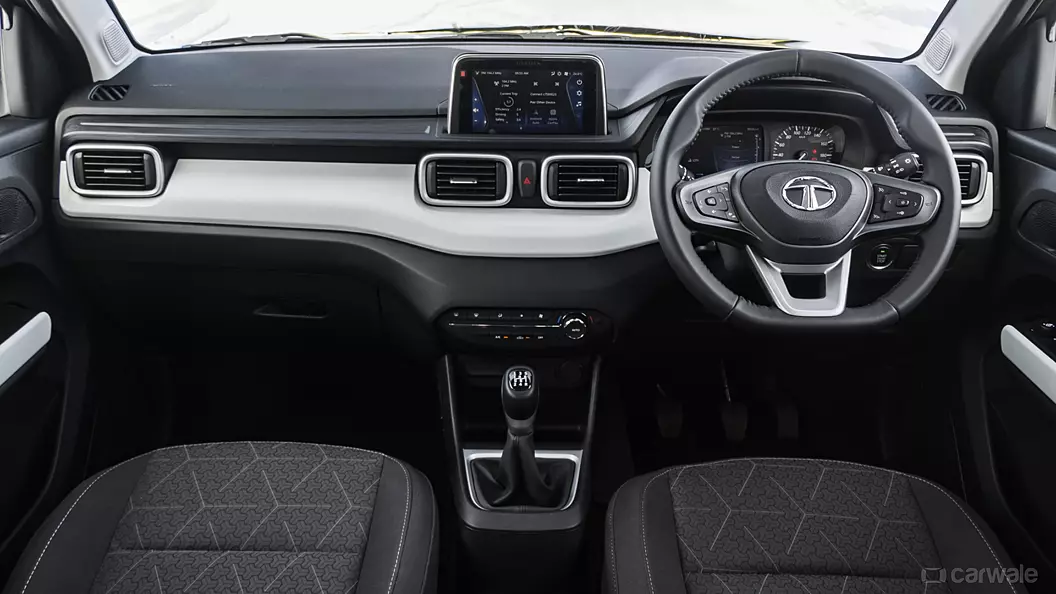
The height of your seat will be the initial thing you observe as you enter the Punch. In this automobile, you often sit in a pretty dominating position that gives you an excellent perspective of the outside, in line with its “SUV” nature. The doors close with a pleasing bang as well, enhancing the build’s security. The colour-coordinated finishing touches on different trim and the seat fabric truly brighten up this interior, despite the acceptable appearance of the dual-tone dashboard.
The Tata Punch’s wide greenhouse area and high canopy will make the cabin seem spacious and airy to the majority of passengers. The 366-litre boot is reasonable for a vehicle of size, even though the back bench is best suited for two passengers only. In the Punch, it is simple to establish a comfortable driving posture, and other than the small rear glass, there are no significant blind spots. The materials are of high quality, and the room has a fresh vibe overall. Practicality is not a problem because there are enough locations in the Punch for you to keep your trinkets.
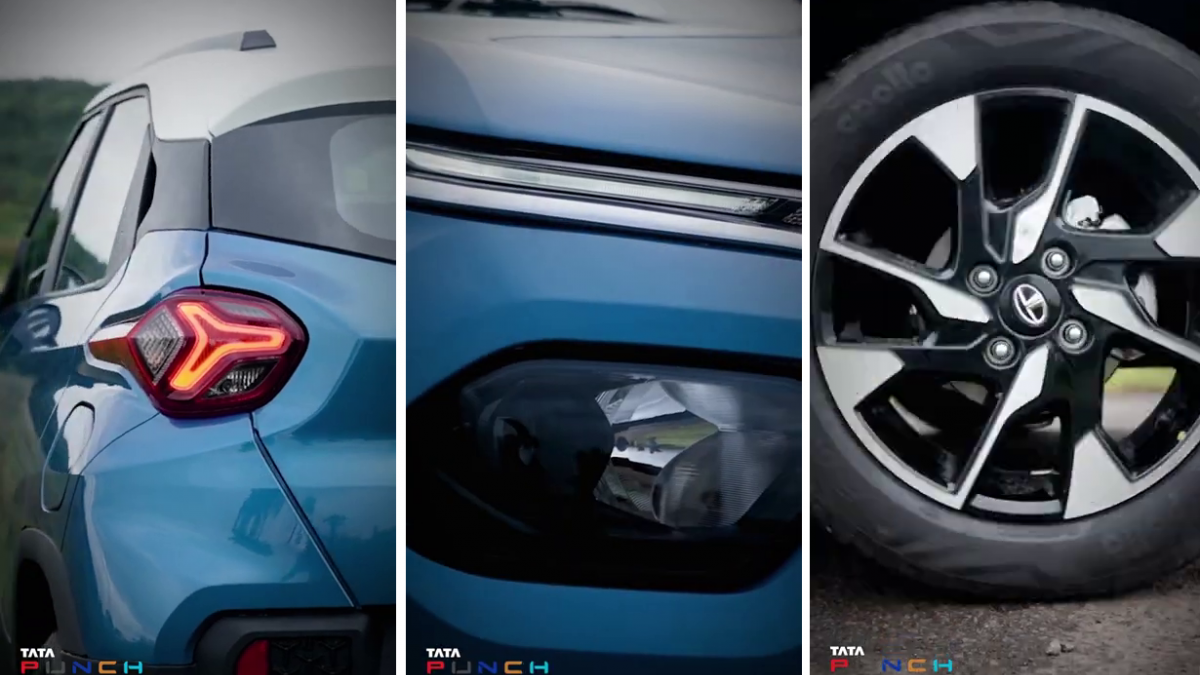
Tata has given the Punch more than enough features, enabling this tiny SUV to captivate buyers who like cutting-edge technology in their new vehicles.
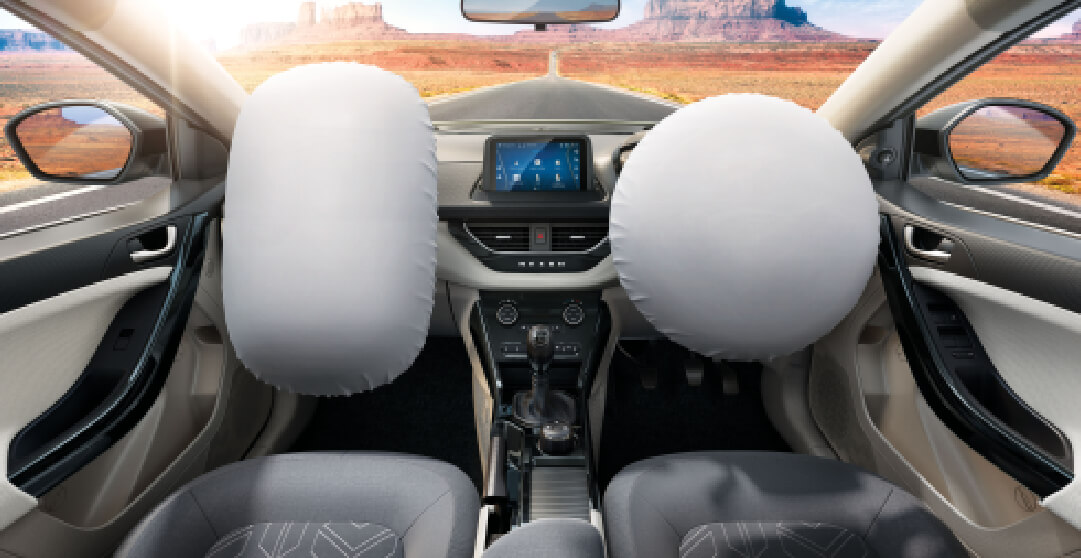
This is not just one of the newest, least expensive, and safest vehicles available in India right now. The Tata Punch “punches” much above its weight, receiving a complete 5-star rating from GNCAP. This tiny SUV has a number of connected car technologies, including geo-fencing, anti-glare IRVMs, ABS with EBD, brake sway control, ISOFIX anchor points, rear defoggers with wipers, front fog lights with cornering function, and brake sway control, among others, for added safety.

In order to increase the Punch’s mileage, Tata installed it with idle engine stop-start technology. Additionally, there are driving modes including Eco and City. In relation to it, the AMT is estimated at 18.82 kpl, while the Punch manual will produce 18.97 kpl. A tiny 1,199cc three-cylinder petrol engine with so-called “DynaPro Technology” powers the SUV. The end result is around 85 horsepower at 6,000 rpm and a maximum torque of 113 Nm at about 3,300 rpm.
The normal transmission is a 5-speed manual transmission, however an AMT is also available. For better grip on slippery situations, the Tata Punch’s AMT has a “Traction Pro Mode” (not designed for actual off-road use). On the technical front, the Punch will have a peak speed of around 160 kph and can accelerate to 100 kph in about 16 seconds.
As the entire range of Punch is well priced, the best pick would be Punch Camo Adventure MT.
| Model | Tata Punch |
| Engine | 1.2- Liter Naturally- Aspirated Three Cylinder Petrol |
| Fuel Tank | 37 Liters |
| Torque | 113Nm |
| Transmission | 5-Speed Manual/ 5-Speed AMT |
| Drive Configuration | FWD |
| Mileage | 18.82 Km/L |
| Curb Weight | 1000 Kg |
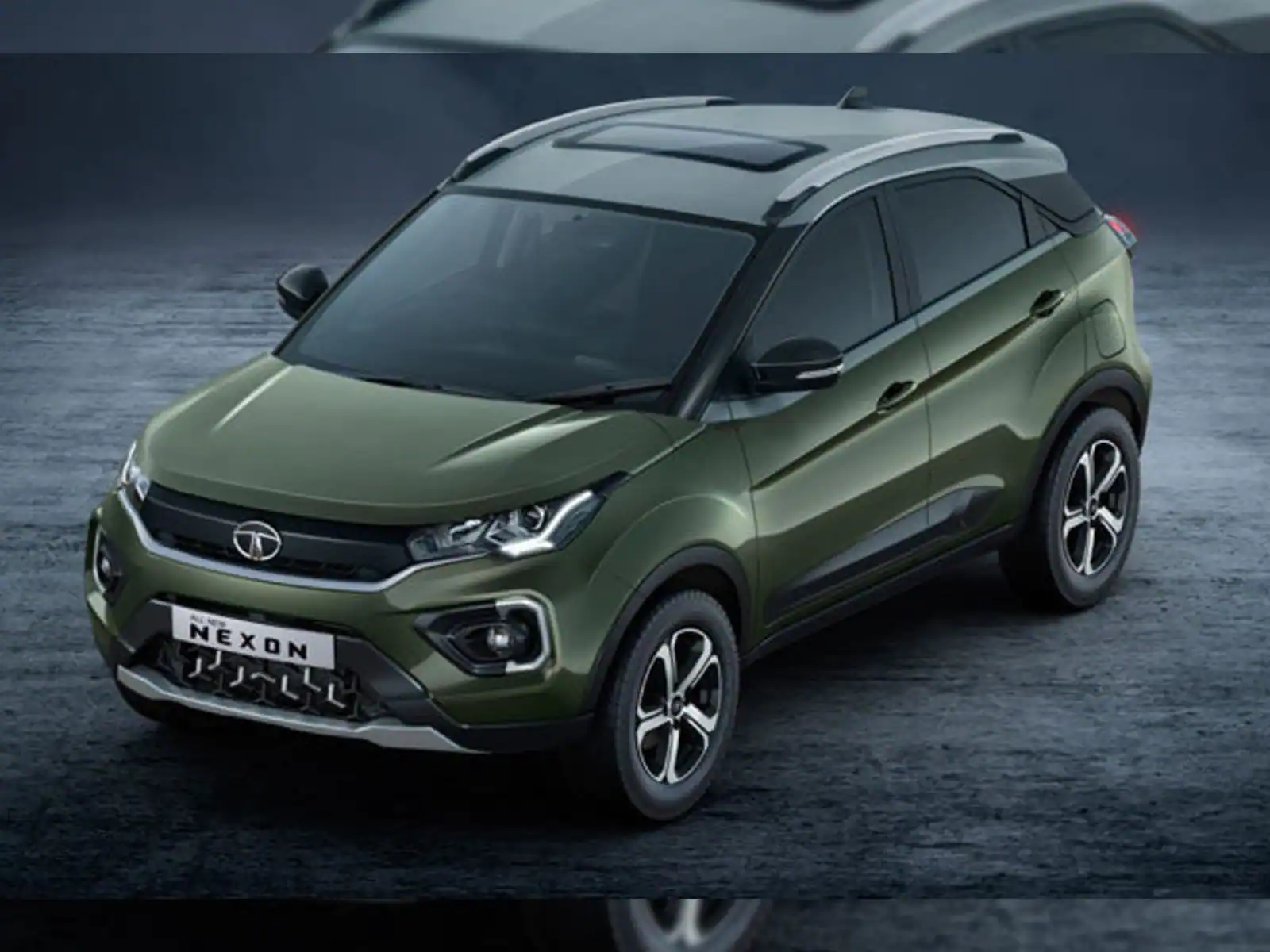
Nobody anticipated that the Tata Nexon concept vehicle would actually go on sale without any design modifications when it was first unveiled at the 2016 Indian Auto Expo. We consider this to be Tata Nexon’s key selling point.
| Tata Nexon Variants |
| Nexon XE |
| Nexon XM |
| Nexon XM(S) |
| Nexon XM Plus (S) |
| XZ Plus |
Tata Nexon is available in 8 different colours- Grassland, Beige, Starlight, Flame Red, Calgary White, Foliage Green, Royal Blue, Daytona Grey and Atlas Black.
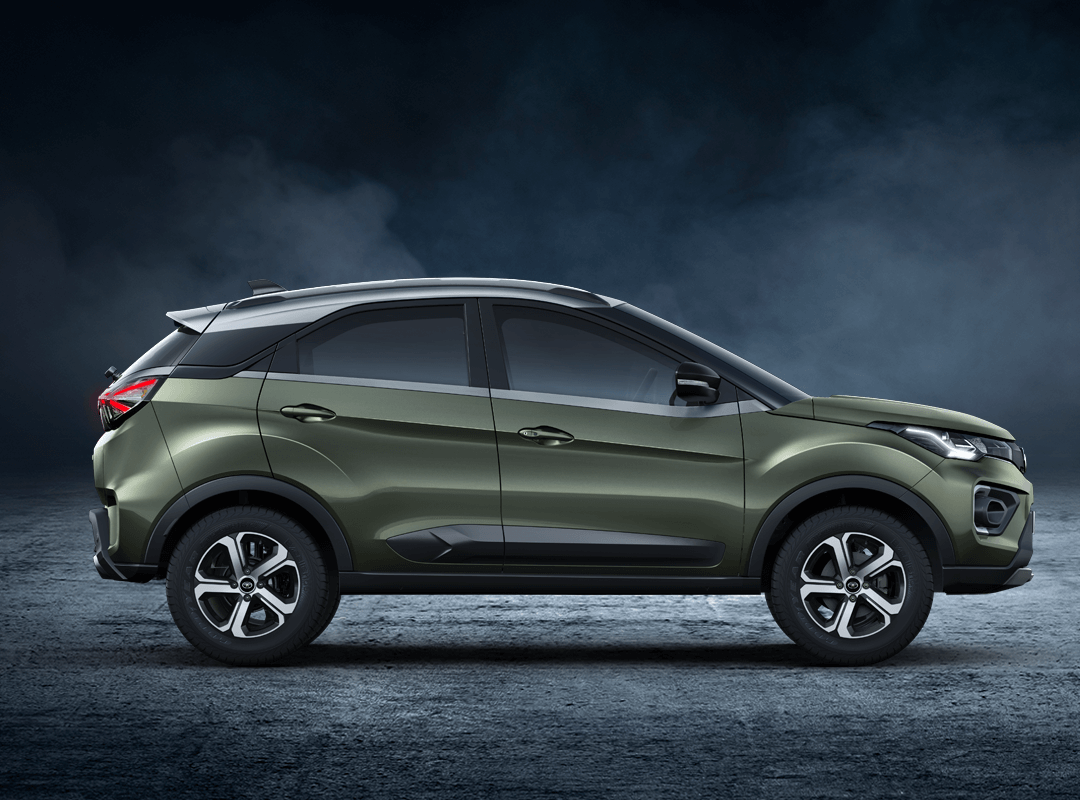
Tata claims that the Range Rover Evoque served as inspiration for the Nexon’s design, and we have no reason to disagree. The Nexon is rightfully allowing JLR expertise to flow into the blood vessels of the volume segment, having followed the remarkable Hexa that raised the brand’s status a few notches.
The large projector headlights up front are evenly spaced apart from each other by a horizontal strip, which is topped by the turn indicators. The interwoven front grille that travels to the ends is inspired by other Tata cars, and LED lights add to the overall attractiveness of the design. The Nexon has a large lower air intake that gives it an SUV-like appearance, and the eyebrow-shaped fog lamps with white ceramic bezels on either side give the front fascia a nice finishing touch.
As you move to the side, the dual-tone exterior will immediately catch your eye because it is in fashion right now. Every automaker has jumped on board to provide that, but Nexon has had it from the beginning, and we are grateful to Tata for being persistent in making it happen. The grey floating roof, which was inspired by coupes, draws attention as it moves from the c-pillar to the quarter panel. The Nexon’s roof rails are a necessary functional component that are elegantly shaped to fall into the back without detracting from its coupe-like silhouette.
Another peculiar feature that adds to the Nexon’s breathtaking beauty is the rear profile. The LED tail lamp is extremely functional and clinical in design. It is simple to say that the Nexon has a two-tone exterior, but the finer design cues that make this SUV unique will make you recognise that slingshot line with X graphics brings a triple-tone feel to the rear. The black guarding component and body colour are combined to create the dual-tone rear bumper. The SUV has a contemporary as well as sporty feel to it.
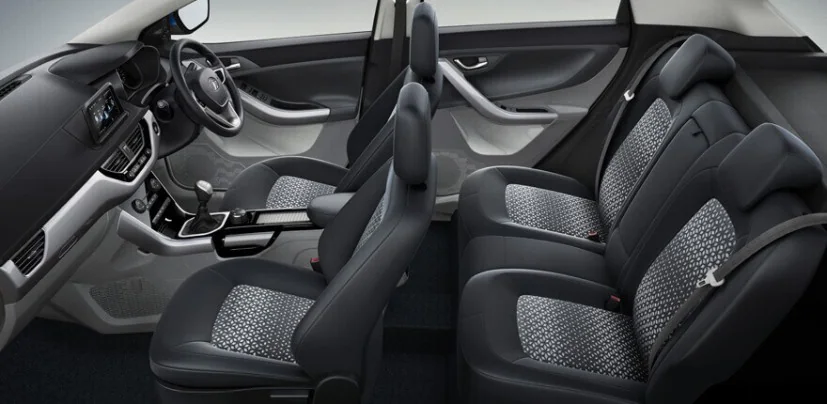
Push-button starting is a convenience that you won’t want to be without because the Nexon is the first Tata car to have it. The USP of this SUV, in a nutshell, is the interior and feature package.
For instance, you can do a tonne of things while driving thanks to the 6.5-inch HD screen that emerges from the top of the dash, the Connect Next App suite, and built-in Android Auto, Bluetooth, and USB connectivity. Tata promised that Apple CarPlay would come later.
Inside the driver’s cockpit, the large steering wheel fits comfortably, and the instrument panel is a familiar design from the newest Tata cars. You would be treated to a number of features, including the reversing camera with guide lines, a unique design for the deep, cooled glove box, front and rear armrests, and the amazing Harman eight speaker audio system with voice control and command recognition. The interface on the touchscreen is a vast improvement over that on the Tigor and Tiago.
The 12V front and rear sockets are very helpful when you run out of power on a long trip. Another convenience feature you’d come to love is the voice alert for front and back door openings that activates the parking brake and changes the drive mode. These minor details make the Nexon quite traditional.
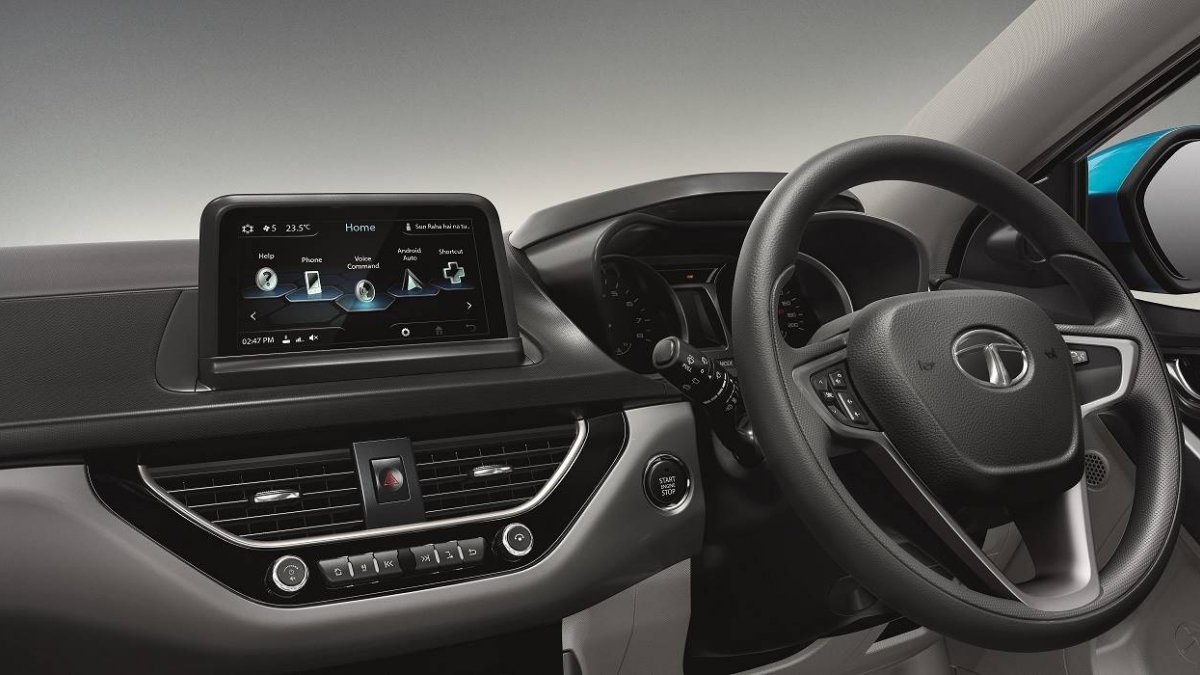
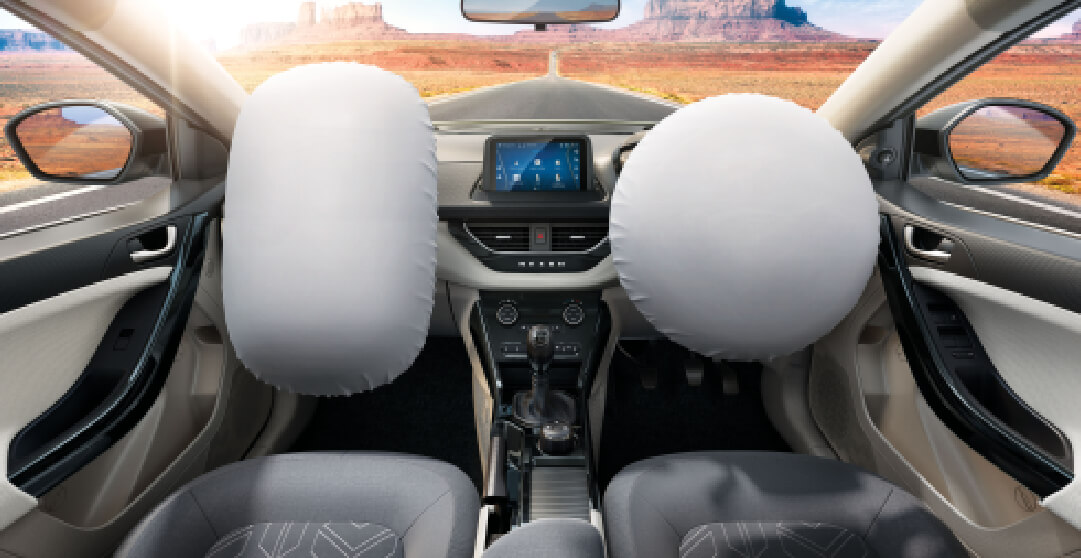
The first automobile built in India to receive the coveted 5-star rating from the Global NCAP was the Tata Nexon. When the Nexon underwent crash testing, the SUV received a 5-star rating after scoring 16.06 out of a possible 17 points in the category for adult occupant protection. The Tata Nexon received a score of 25 out of a possible 49 in the category of child occupant protection. Front dual airbags with EBD and ABS are just a couple of the safety features offered by the Nexon.

Both a 1.2L turbo petrol and a 1.5L turbo diesel engine are offered for the Tata Nexon.
Both engines can be paired with either a 6-speed manual or a 6-speed AMT automatic transmission.
The 1.2L Turbo Petrol engine produces 170Nm of torque at 4000 rpm and 120PS of power at 5500 rpm. The 1.5L engine in the Tata Nexon produces 260Nm of torque at 2750 rpm and 110PS of power at 4000 rpm.
The best model of Tata Nexon for most buyers would be the XZ Plus
| Model | Tata Nexon |
| Engine | 1.5 liter Turbocharged Revotorq Engine |
| Fuel Tank | 44 Litres |
| Torque | 260NM |
| Transmission | AMT |
| Drive Configuration | FWD |
| Mileage | 18.5 kmpl |
| Curb Weight | 1179-1315 kg |
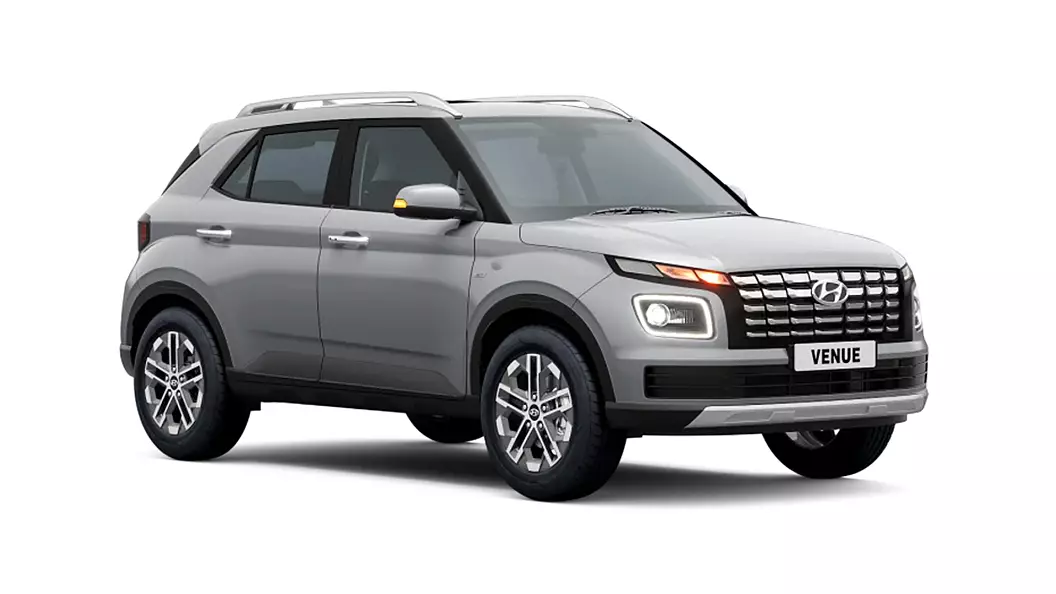
One of the top car manufacturers in India, Hyundai offers both affordable and expensive vehicles. With the Grand i10, Santro, and Elite i20’s successful launches in recent years, Hyundai has established itself in India’s compact market. With the release of the Hyundai Venue, Hyundai and the compact SUV market both adopted a daring new design philosophy. The Venue’s small size makes it the perfect choice for all those searching for an SUV-like driving dynamics which is more suited to crowded Indian roads. The Hyundai Venue has been a well-liked option among Indian buyers ever since its release.
| Hyundai Venue Variants |
| Venue E |
| Venue S |
| Venue S Opt |
| Venue S Opt Turbo iMT |
| Venue S Plus Diesel |
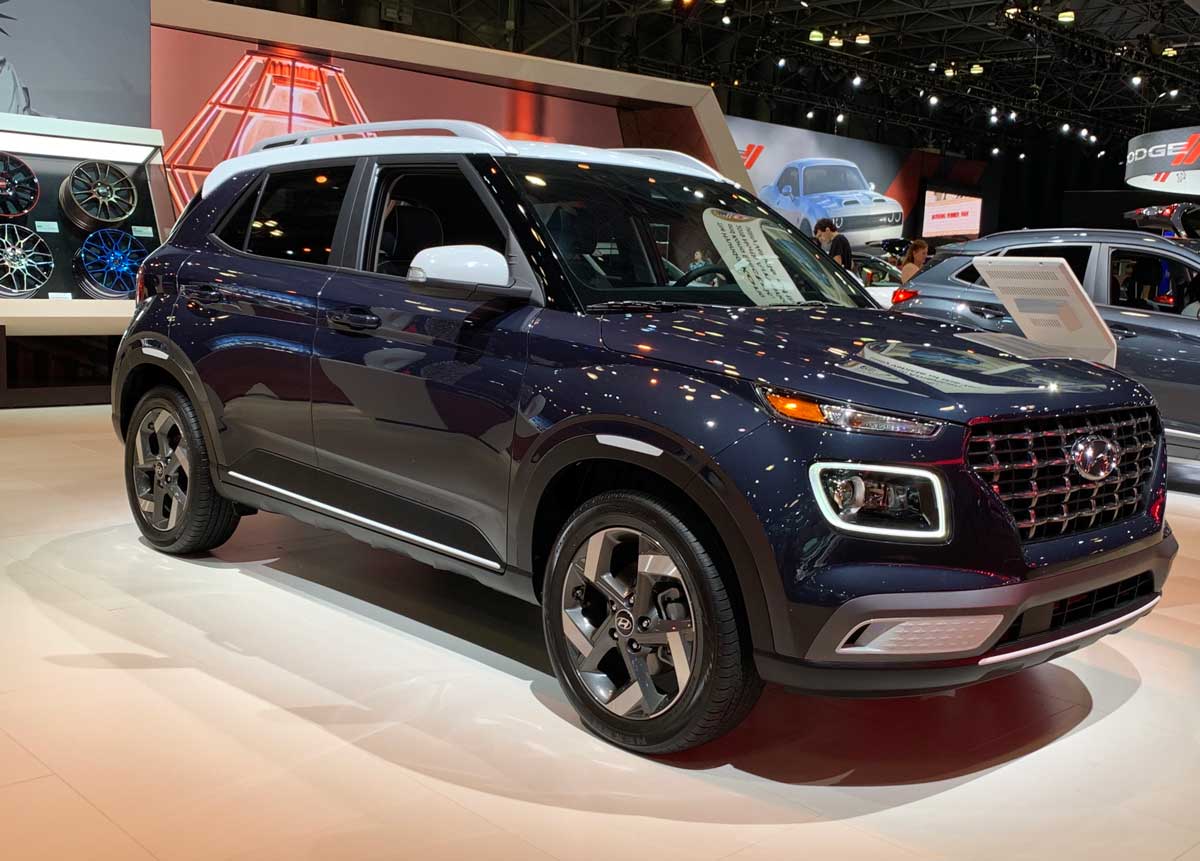
The Hyundai Venue looks strikingly similar to a young Hyundai Creta at first glance. Although there are more similarities to Hyundai’s hatchbacks than the Creta’s, the exterior design still features the same sleek lines and strong stance. The addition of flared wheel arches and faux skid plates emphasises the SUV-ness of the vehicle even though its size is more comparable to the Hyundai Grand i10.
The Hyundai Venue’s front is unquestionably its exterior design’s focal point. An unusual headlamp configuration is placed on either side of a large front grille with chrome accents. In contrast to the main headlamp, which is located lower on the bumper, the metrics have been kept separate and moved up. In addition to housing the fog lamps, the faux skid plates give the front end a rugged appearance. The Hyundai Venue creates a strong impression of an SUV-like vehicle with its extremely aggressive front end.
The Hyundai Venue’s rear resembles Hyundai’s hatchback models quite a bit. The Hyundai Venue’s rear end is mostly plain, but it does have a contrasting faux skid plate and some chrome accents. The strong body line and the blackened pillars, which are visible from the side, are Creta DNA. The Hyundai Venue is a compact SUV after all, as evidenced by its small size.
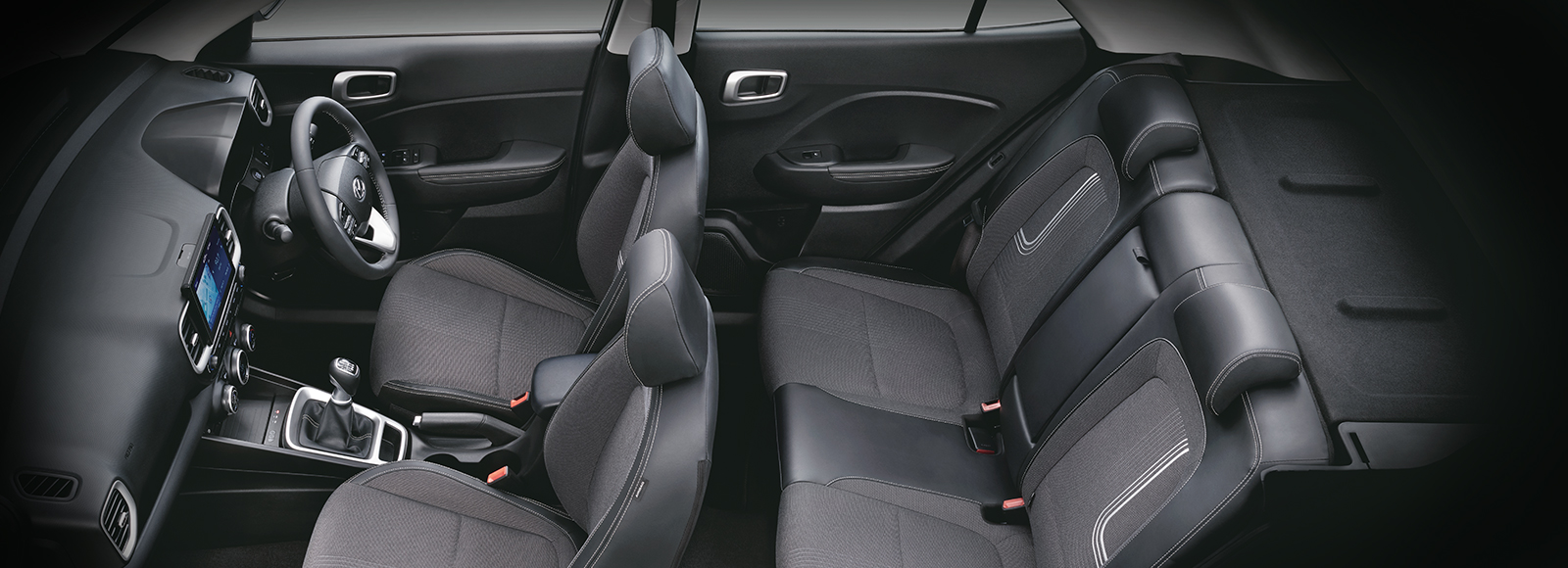
The Hyundai Venue’s interior can be counted on to meet Hyundai’s exacting standards for quality. To break up the monotony in the cabin, the Hyundai Venue’s interiors have been given an all-black makeover with silver accents and a beige roof. Some variants’ addition of an electric sunroof increases the cabin’s openness.
An 8-inch touchscreen, along with a logically organised centre console, dominate the dashboard. The controls that are mounted on the steering wheel also give the driver adequate functionality. The passenger comfort level should be adequate thanks to the high grade of the seat fabrics. Despite looking like an SUV, it can comfortably seat four adults due to the interior’s compactness. Young couples and young professionals seeking a compact SUV will find it to be a good fit because of this.
The Hyundai Venue is a car that can withstand the normal wear – and – tear as during ownership period thanks to the quality of material used or the build quality. The quality of the Hyundai interior should last and be simple to maintain if you’re thinking about buying a used Hyundai Venue.
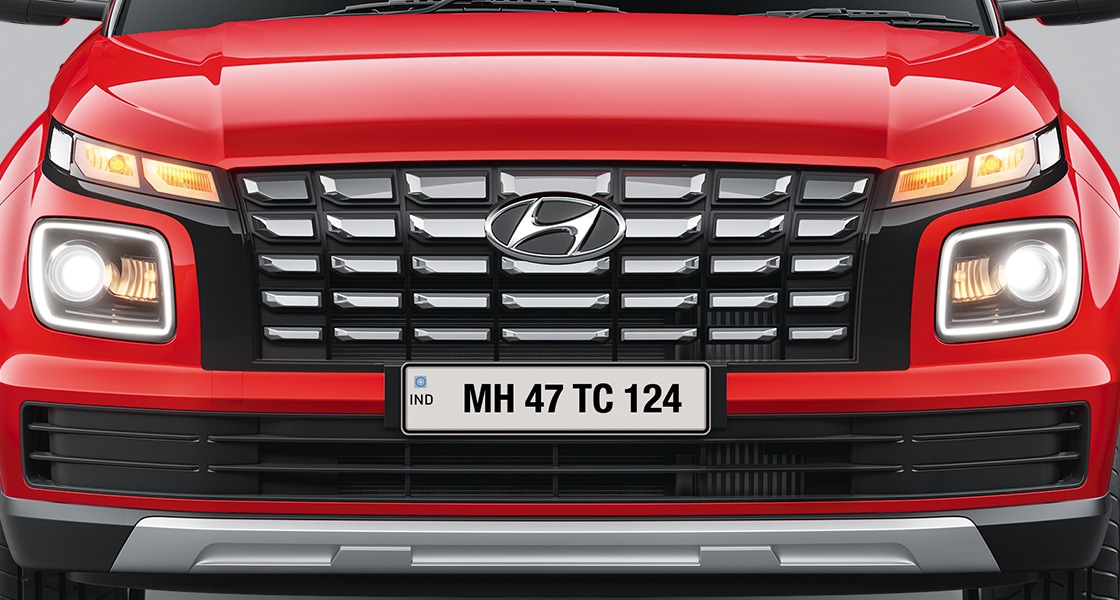
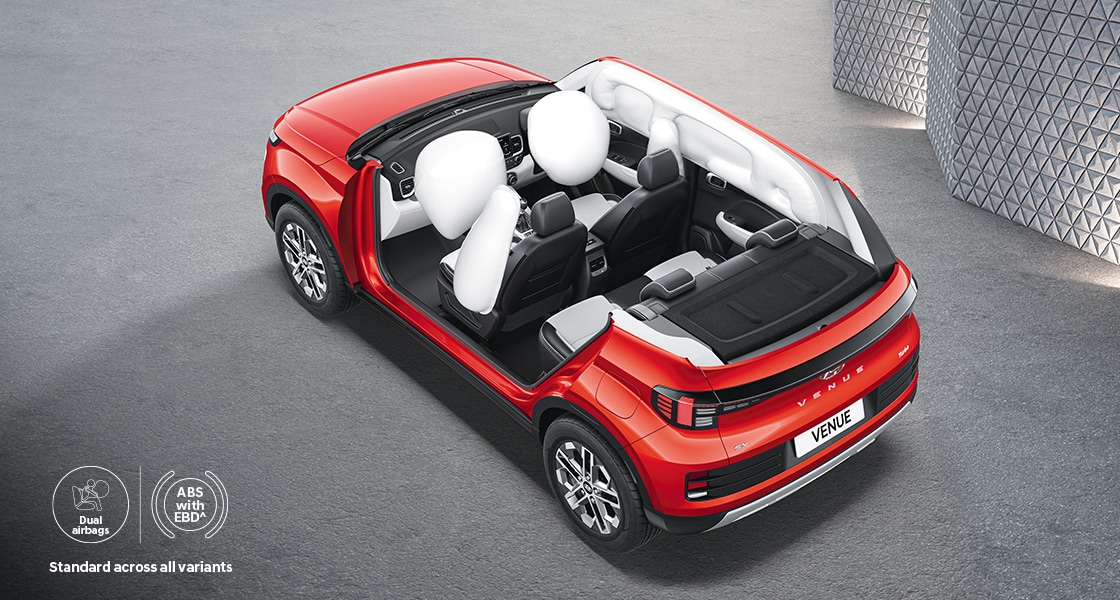
One zone in which all manufacturers are enhancing their products is safety. While six airbags are an option on the most expensive Hyundai Venue SX (O) variant, dual airbags are standard across all Hyundai Venue variants. The Hyundai Venue also comes with rear parking sensors, high speed alert system, ABS, and EBD as standard safety features.
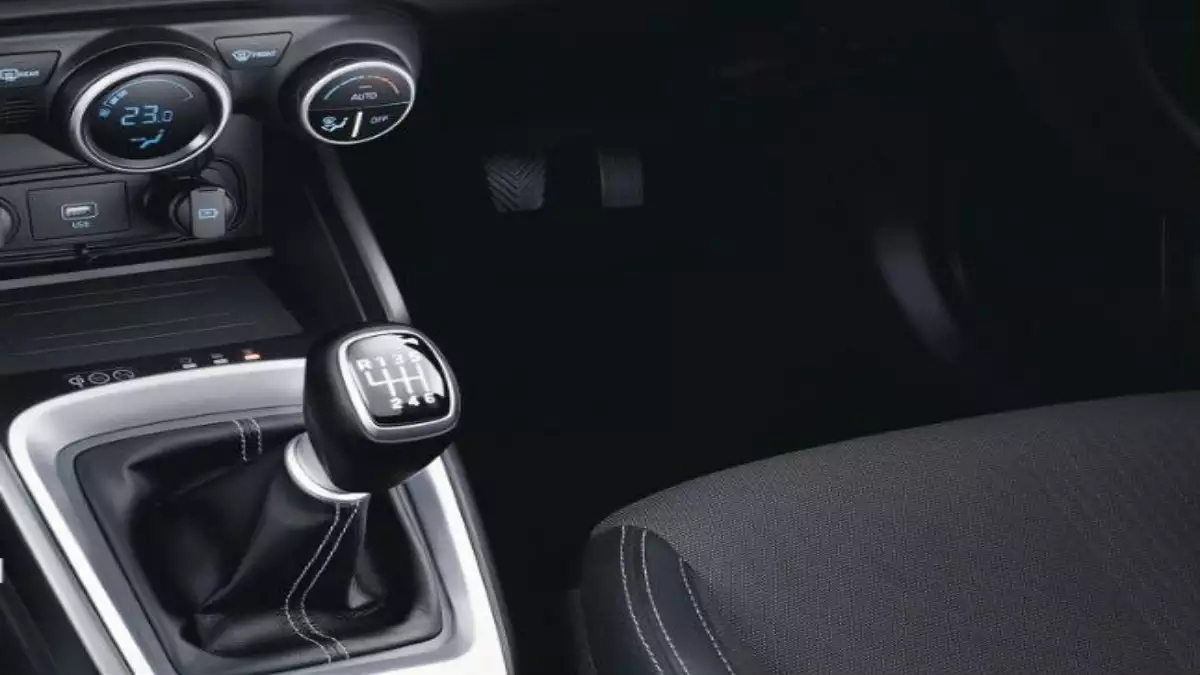
Through the performance and efficiency of their engine choices, Hyundai has formed itself as a dependable performer. The Hyundai Elite i20 shares the same engines. A 1.2-liter gasoline engine and a 1.4-litre turbo diesel engine power the Hyundai Venue. Recently, Hyundai also unveiled a 1.0-liter turbocharged gasoline engine. These motors can be coupled with a 6-speed manual transmission, a 7-speed DCT automatic transmission, or a 6-speed clutchless manual transmission.
The 1.0-liter turbo GDI petrol engine powering the Hyundai Venue. Hyundai has provided the Hyundai Venue with good mileage, with 18.27 km/l for the gasoline engine and 23.7 km/l for the diesel engine. Overall, you won’t be dissatisfied with the Hyundai Venue’s performance and safety features. The effectiveness should still be there and last for many more years if you’re thinking about purchasing a used Hyundai Venue.
The best model for Hyundai Venue is S.
| Model | Hyundai Venue |
| Engine | 1.2 L Kappa Dual VTVT |
| Fuel Tank | 45 Liters |
| Torque | 113.8 Nm |
| Transmission | Automatic |
| Drive Configuration | FWD |
| Mileage | 16.0 Km/L |
| Curb Weight | 1081 Kg- 1233 Kg |
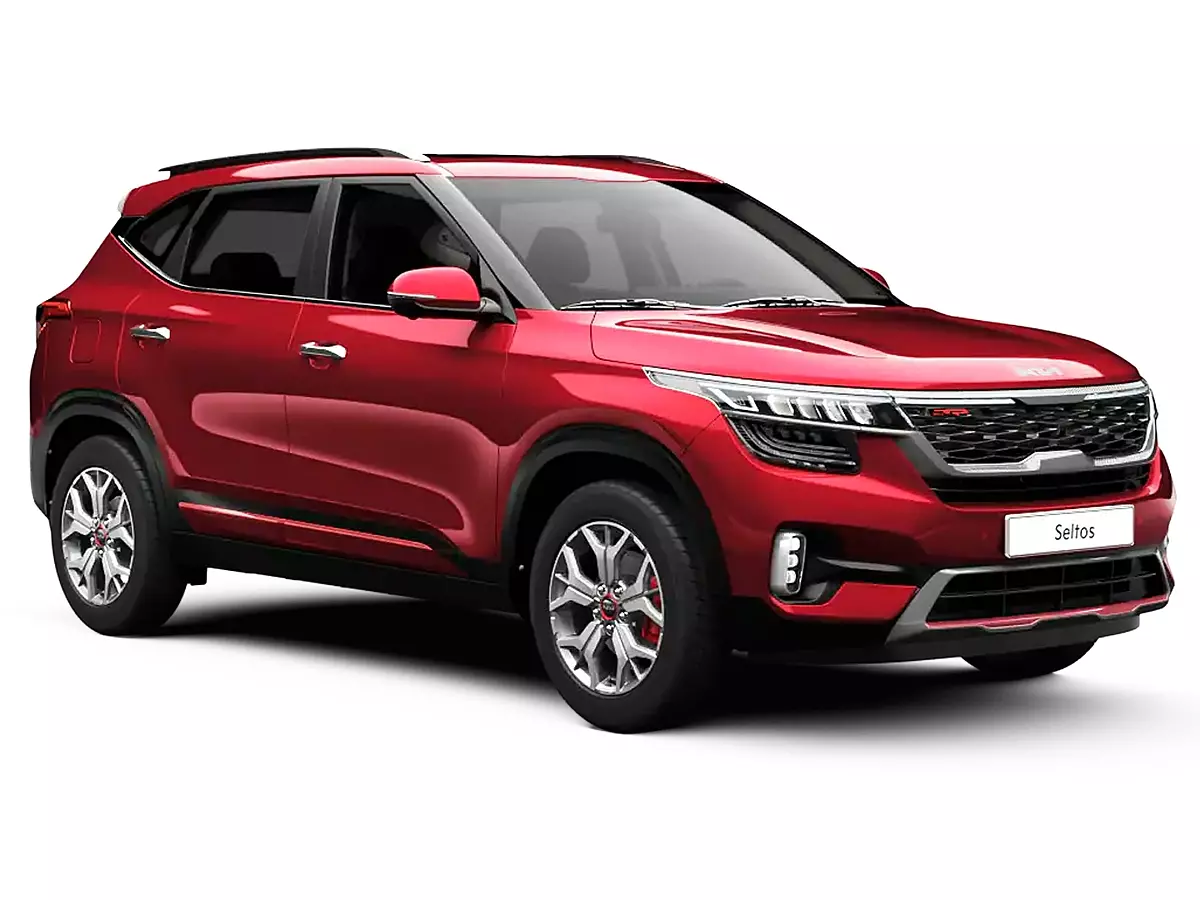
With a goal of winning the public’s hearts and minds, Kia joined the Indian market. In order for the Korean automaker to compete with the best in India, its debut vehicle needed to be a declaration of intent. This vehicle was the Kia Seltos, a mid-size SUV that dominated the market and quickly became well-known. The popularity of the Seltos paved the way for said Kia Sonet, Carnival, and Carens, and Kia has gradually ascended the sales figures to compete with Mahindra and Honda, among others.
| Kia Seltos Variants |
| HTE |
| HTE D |
| HTK |
| HTK Plus |
| HTK D |
Kia Seltos is available in 10 Colours- Intense Red, Glacier White Pearl, Sparkling Silver, Gray, Aurora Black Pearl, Imperial Blue, Glacier White Pearl with Aurora Black Pearl, Gravity Gray, Intense Red with Aurora Black Pearl and Gravity Grey with Aurora Black Pearl.
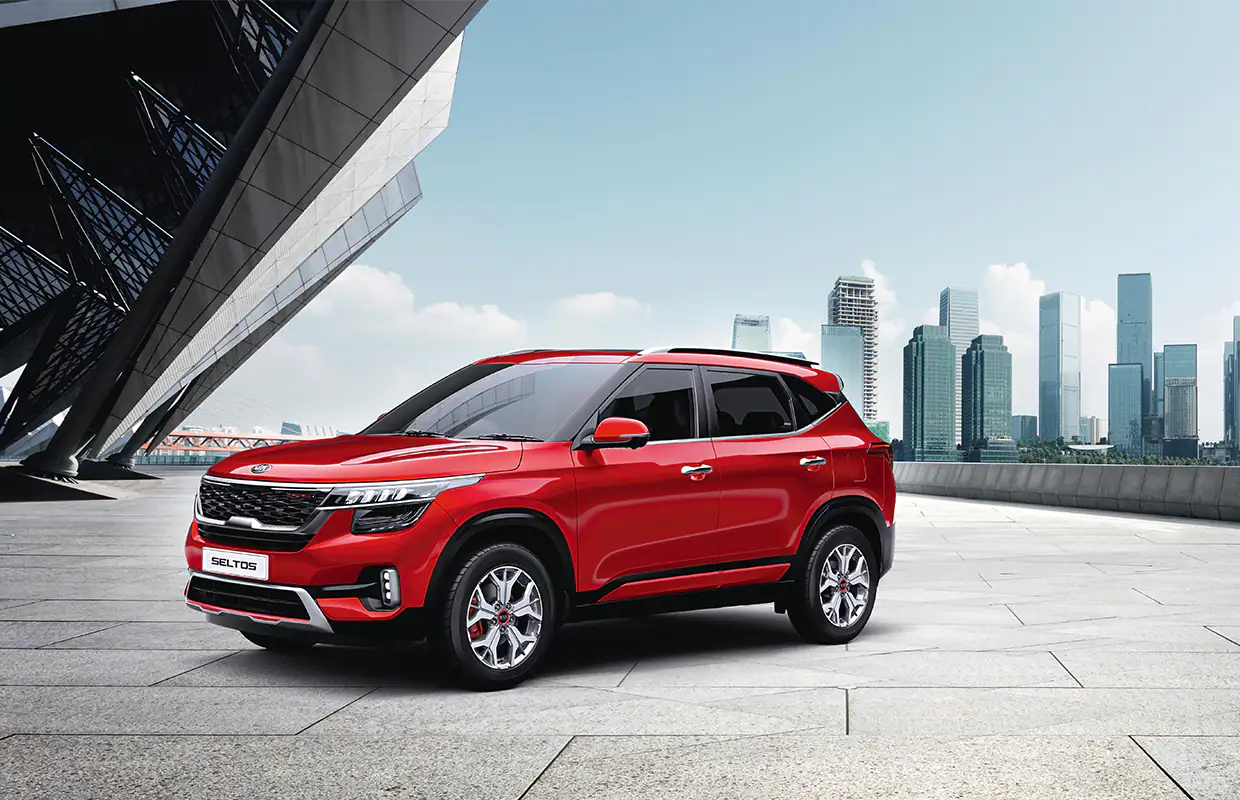
The Kia Seltos is constructed on a slight modification of Hyundai’s K2 Platform, which is also used by vehicles like the most recent Hyundai Creta. The Kia Seltos is a beauty at first glance with its attractive, aggressive design. The Kia Seltos is a rather attractive midsize SUV from the front. It has a mature, sophisticated, yet assertive face that’s also decorated with a blackened tiger nose grille that is highlighted by chrome garnishing and a deep air dam. The attractive headlamp cluster, which has LED projectors, indicators, and LED DRLs, is located on either side of the grille. The bumper has been kept simple, but a designed air dam and ice cube LED fog lights add character.
The Seltos maintains the sporty, contemporary, yet aggressive stance and has a distinctively European-looking profile when approaching from the sides. The roofline’s sloped-to-the-rear appearance and the window line’s upward rise enhance the overall appearance. Whilst roof rails and handles both are made of silver chrome, the ORVMs have cameras underneath them. The 17-inch single- or dual-tone alloy wheels are highlighted by the black cladding that covers the wheel arches. The Seltos also features an as a whole aerodynamic stance that exudes confidence, 190 mm of high ground clearance.
The LED tail-lamp cluster, which is what draws attention to the back and unifies the front and rear designs, is what makes the vehicle stand out from the crowd. The Seltos has integrated spoilers on the tailgate in addition to a chrome strip and tail lamps. Parking sensors, a prominent skid plate, two faux exhausts, and a sizable black area are added to the rear bumper to break up the colour monotony.
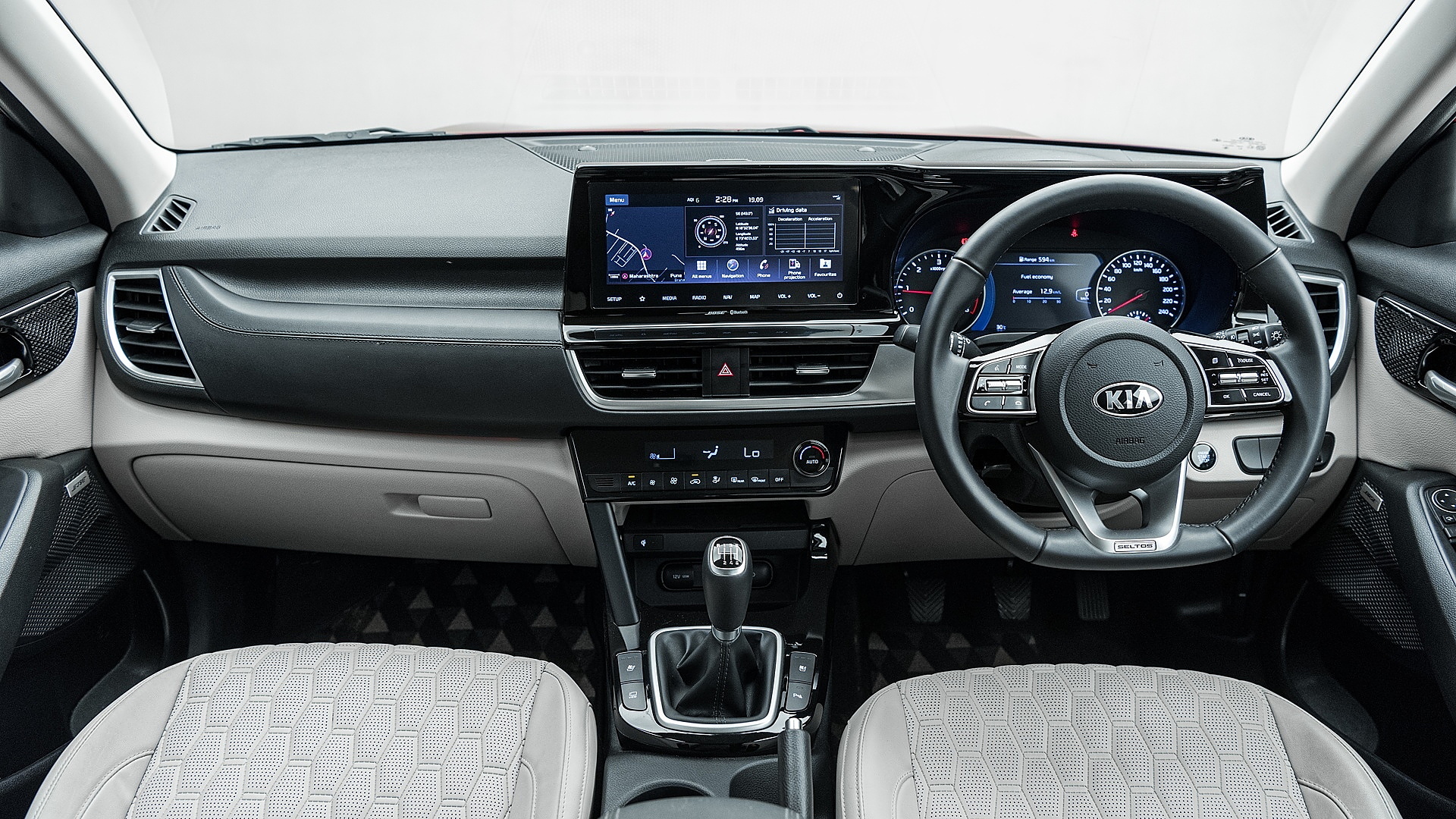
The Seltos’ interiors are a major concern because of its price, which is meant to compete with premium rivals. Ingress and egress are easy thanks to the wide doors that open and the roof’s tall construction. Numerous trim choices are available that range from well-designed dual tones to an interior that is completely black. Although the design of the cockpit-inspired cockpit is modern and futuristic, the overarching interior remains the same.
The Seltos have impressive headroom and legroom, which is the first thing you would notice upon entering the vehicle. Even taller passengers will be completely at ease in the Seltos. The large front windshield makes the cabin feel light and airy. A sizable 10.25-inch touch infotainment dominates the centre of the dashboard and offers a variety of connectivity options, including Apple CarPlay and Android Auto. A contemporary, user-friendly 7-inch digital display is located next to the infotainment system. Other than that, the dashboard has a modern design with piano black and silver inserts.
The leatherette upholstery and the leatherette inserts on the dashboard, armrest, gear knob, door armrest, and even the steering wheel all scream luxury in terms of materials. The boot has a good 433 litres of space, and there are many features and storage areas inside. The Seltos comes equipped with a number of cutting-edge and premium features from Kia, including voice-activated electronic sunroof, air purifier, front ventilated seats, auto-dimming IRVMs, heads-up display, and 8-speaker BOSE sound system.
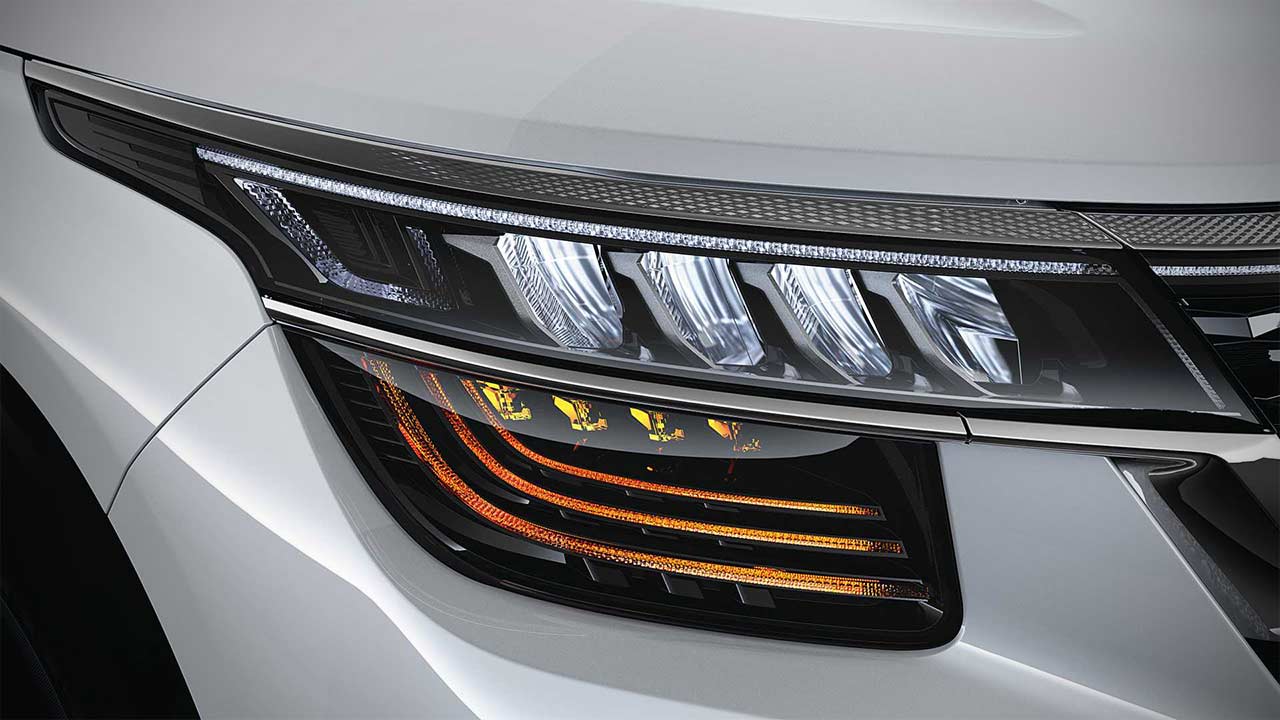

With a number of excellent safety features built in, the Seltos performs admirably in terms of safety. Standard features include dual airbags, ABS with EBD, a reverse parking sensor, and four disc brakes. Up to six airbags, electronic stability control, hill assist control, a tyre pressure monitoring system, etc. are additional safety features. Nevertheless, despite having a sturdy and long-lasting chassis made of high-tensile steel, the Seltos was only given a 3-star GNCAP safety rating.
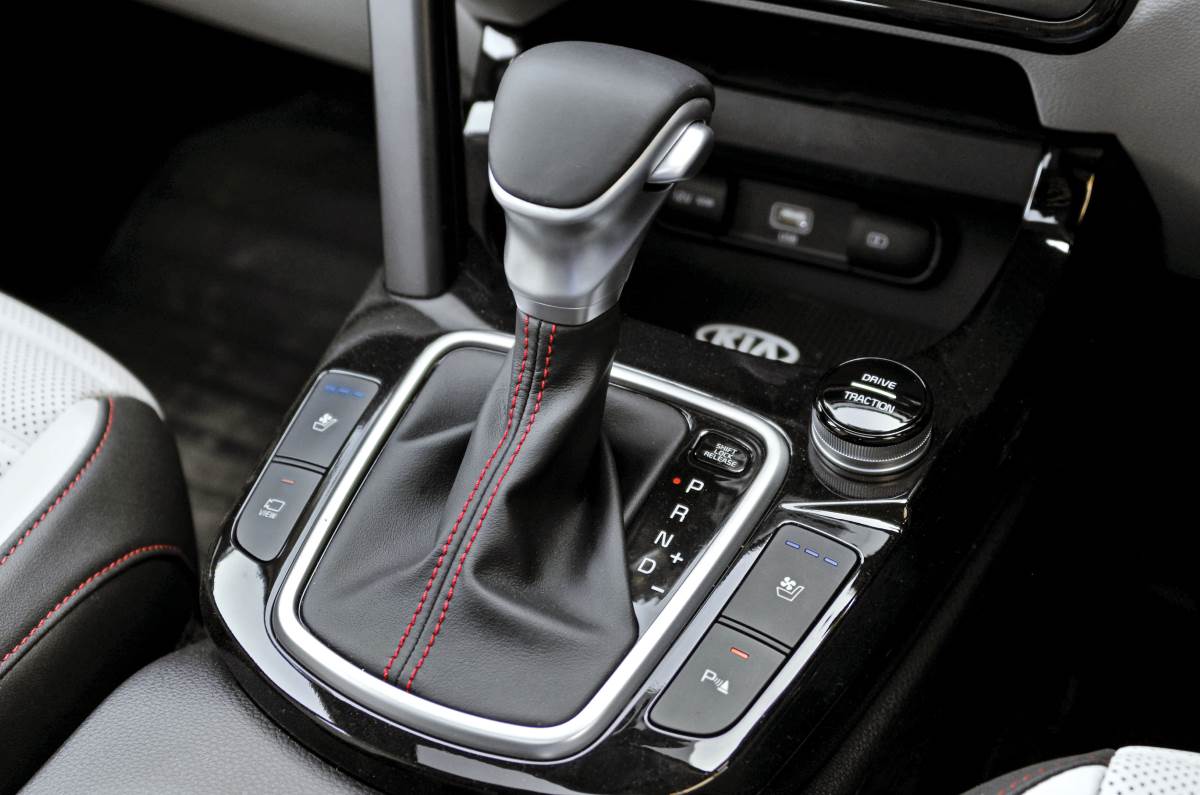
The BS6 compliant Kia Seltos offers three different engine options, whereas the majority of manufacturers have chosen to abandon capable diesel powertrains as a result of the BS6 regulations’ strict requirements. The first is a 1.5-liter gasoline engine (115 PS/144 Nm), the second is a 1.4-liter turbocharged gasoline engine (140 PS/242 Nm), and the third is a capable 1.5-liter diesel engine (115 PS/250 Nm).
Every one of the three comes standard with a 6-speed manual transmission. A 7-speed DCT, a CVT, and a 6-speed torque converter are available for those who prefer automatic transmissions with the 1.4-liter turbo-petrol, 1.5-liter gasoline, and 1.5-liter diesel engines, respectively. Moreover, a 6-speed iMT is included with the 1.5-liter gasoline engine.
The best model or variant for Kia Seltos is HTK Plus
| Model | Kia Seltos |
| Engine | 1.5 L CRDi VGT |
| Fuel Tank | 50 Liters |
| Torque | 250 Nm |
| Transmission | Manual |
| Drive Configuration | FWD |
| Mileage | 20.8 Km/L |
| Curb Weight | 1221 Kg- 1343 Kg |
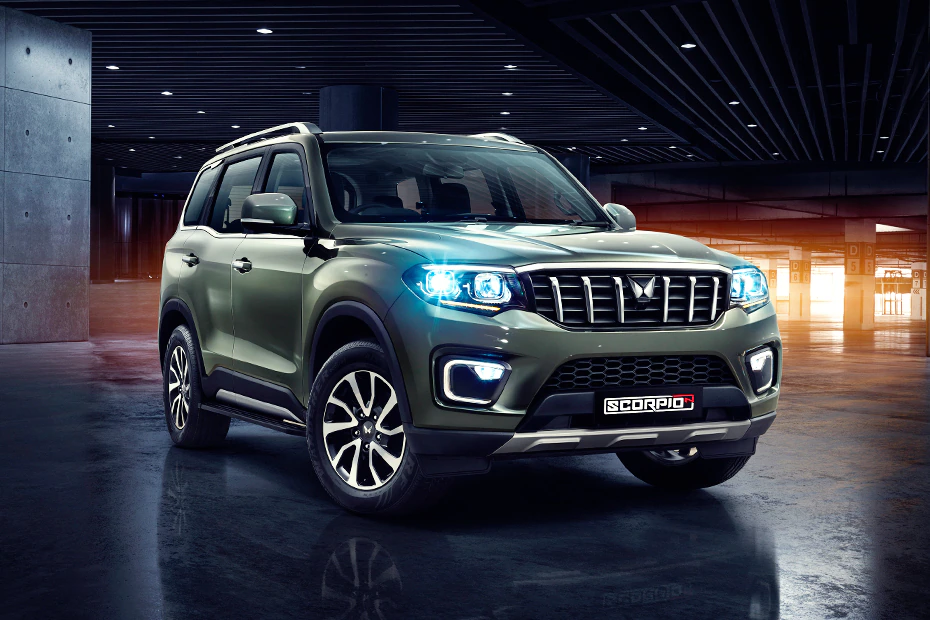 It’s safe to say that the Mahindra Scorpio has earned its place among the Maruti 800, Tata Indica, Toyota Innova, and other automobiles that have come to symbolise Indian motoring. Its status as an iconic vehicle is reflected in how it appears, handles, competes in the industry, and what it is perceived to represent. The third generation of the SUV in 20 years, the new Scorpio N, represents perhaps its biggest paradigm shift yet, scaling up in every way to the point where it now asserts to even be aiming for the Toyota Fortuner.
It’s safe to say that the Mahindra Scorpio has earned its place among the Maruti 800, Tata Indica, Toyota Innova, and other automobiles that have come to symbolise Indian motoring. Its status as an iconic vehicle is reflected in how it appears, handles, competes in the industry, and what it is perceived to represent. The third generation of the SUV in 20 years, the new Scorpio N, represents perhaps its biggest paradigm shift yet, scaling up in every way to the point where it now asserts to even be aiming for the Toyota Fortuner.
| Mahindra Scorpio N Variants |
| Scorpio N 72 |
| Scorpio N Z2 Diesel |
| Scorpio N Z4 |
| Scorpio N Z4 Diesel |
| Scorpio N Z6 Diesel |
The Mahindra Scorpio comes in seven colours, including Dazzling Silver, Deep Forest, Grand Canyon, Everest White, Napoli Black, Red Rage, and Royal Gold.
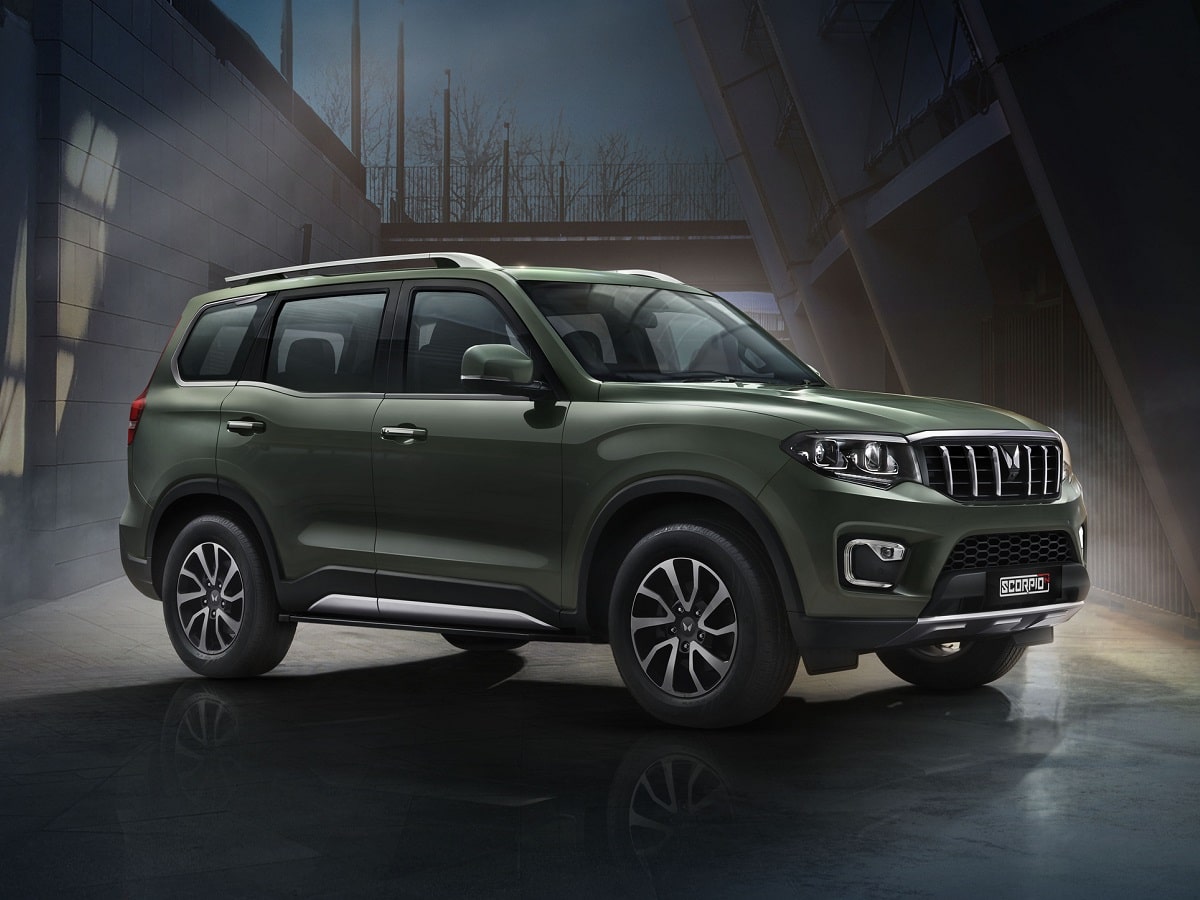
Most telling, I think, is how it looks. It is an enormous, high-riding SUV with a protruding long bonnet and a pronounced two-box shape, and that screams “Scorpio” to the world. But from that point on, it starts to depart from the pattern. Overall, it is smoother and curvier with more subdued details that are better incorporated into the design as opposed to loud, obvious ones. The grille is more three-dimensional, the hood scoop is gone, and there are LED running lamps and fog lamps in the bumper that are shaped like a scorpion’s sting. The headlamps are slimmer and now fully LED, and the headlamps are now fully LED.
This time, the personality lines are grilled into to the body panels itself rather than the bulky plastic cladding that once surrounded the car. The kink just above rear wheel, which was also present on the XUV700, is now much more noticeable in part because of a chrome strip that runs above it and curves up into some other scorpion sting design element in the rearmost window. Naturally, the large roof rails are back, but the roof’s kink towards the back has been greatly reduced. I also like the 18-inch chrome-lined wheels because they have the perfect balance of sporty and rugged, and the 255/60 tyres look purposefully chunky sitting on them.
However, the departure is most noticeable in the rear, which now appears bland and lifeless in comparison. There isn’t a single image of Mahindra in the brochure, and it hardly ever appears in any advertising. Perhaps Mahindra feels the same way. The most recent version of the tall, “stacked” taillamps appears to be unsubtly inspired by Volvo’s SUVs, the chrome bumper trim doesn’t do much to liven it up, as well as all factors must be considered, it makes it look a little bland. The Scorpio N’s exterior design is generally more sophisticated; you might even say more upscale. But as an outcome, some of the older Scorpios’ uniqueness has also been lost.
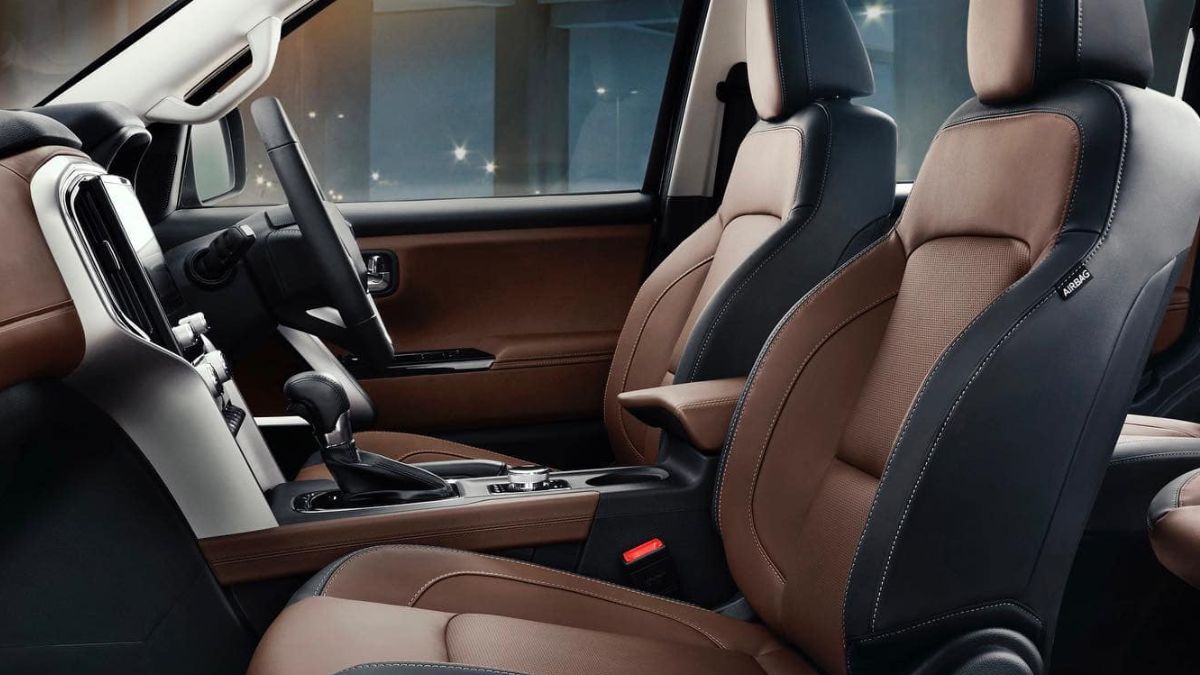
Because of the tangibly higher quality and thoroughly modern design, the interior makeover is much simpler to appreciate. Plastics no longer have rough edges, and fit and finish are also tight, with the exception of a few rare but well-hidden cases. The faux leather and plastic trim are perfectly matched by the chocolate brown colour, which is a great combination of rich appearance and stain resistance. The chunky door grabs are tough yet stylish, the centre console’s piano black and brushed silver trim feels upscale, and the old car’s plain-appearing switchgear has been replaced.
This is furthered by the A-pillar grab handles, which make it much easier to climb into the high-set cabin. Instead of the dual-screen setup found on the XUV, there is a standard hooded instrument binnacle with clean, though unassuming, analogue dials and a 7.0-inch colour screen that is jam-packed with useful information. The 8.0-inch touchscreen has two rotary knobs below and a row of useful shortcut buttons above it. There is adequate storage, including two sizable cupholders, a bay for the wireless phone charger, and sizable door pockets.
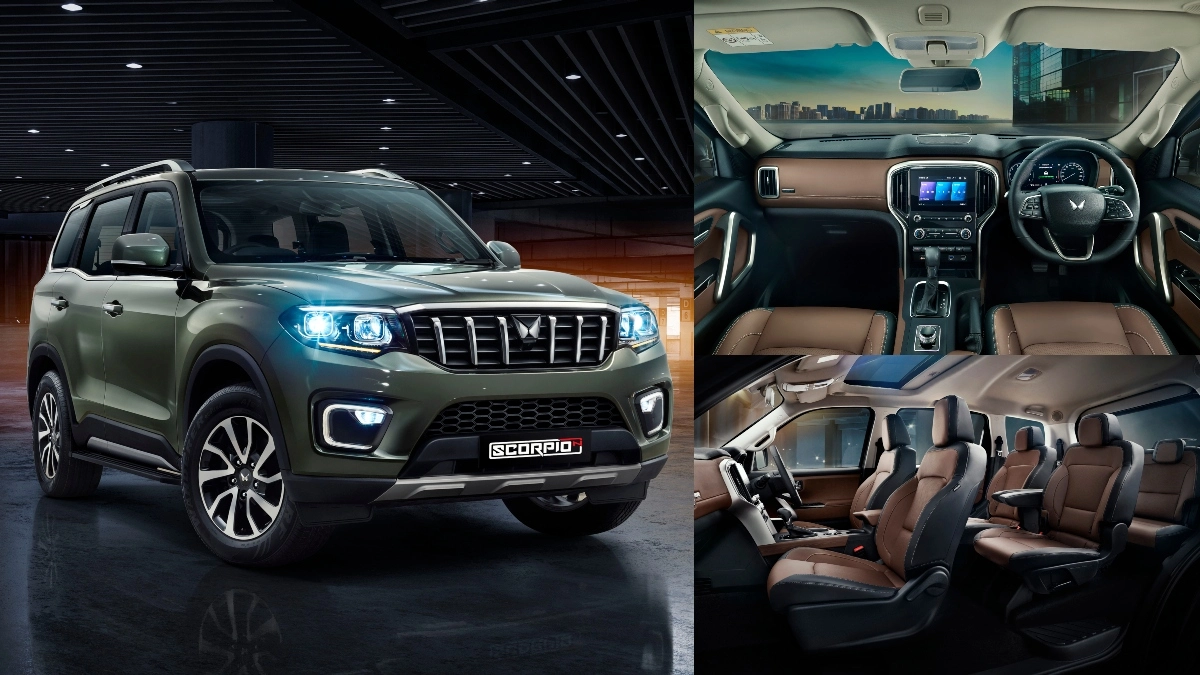

The Mahindra Scorpio N places a high priority on safety equipment, which includes parallel and perpendicular parking guides, ESC, four-wheel disc brakes, hill descent and hill hold, ISOFIX child seat mounts, six airbags, a tyre pressure monitoring system (TPMS), and even a drowsiness detection system. In addition to parking sensors and cameras, other safety features include hill descent and hill hold. With this one, they are aiming for a perfect five stars.
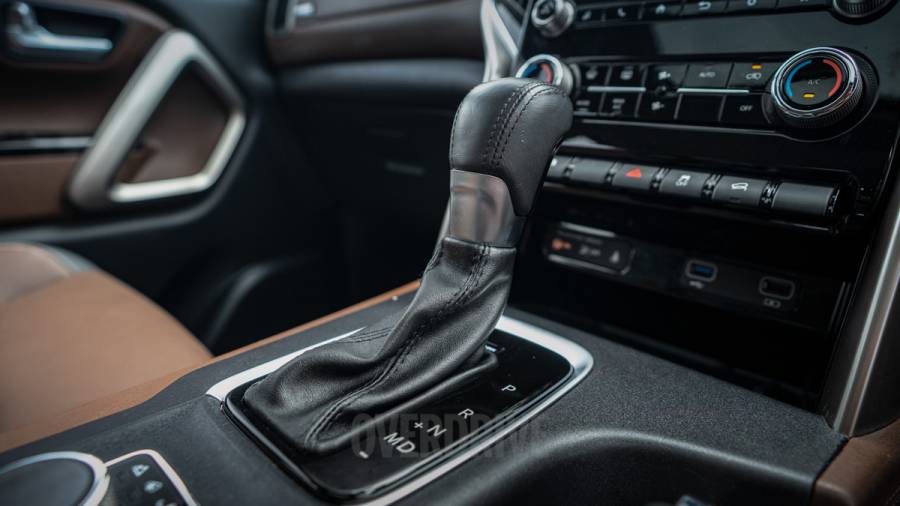
The new SUV will run on the most recent generation of Mahindra turbo-petrol (mStallion) and turbo-diesel (mHawk) engines. The 2.0-liter turbo-petrol engine we got to test produces 203 horsepower and 380 pound-feet of torque, while the 2.2-liter diesel engine produces 175 horsepower and 400 pound-feet of torque, with slightly lower torque outputs in the manual versions.
The Mahindra Scorpio N petrol automatic managed to achieve an impressive 10.2 seconds for 0-100 kph in testing against our VBOX, with respectable kickdown acceleration times of under 8 seconds for 20-80 kph and 40-100 kph. Both vehicles have six-speed torque-converter automatic transmissions, which, once more, are ideal for this big bruiser’s laid-back personality. While not sporty or quick-shifting, these gearboxes are smooth. Keep your inputs smooth, and they will carry out their tasks quietly in both versions. If you let the revs drop too low on the downshift in either version, or if you floor it, there will be a pause before it goes into gear on the upshift. There are no shift paddles, but the gear lever allows for manual shifting.
The best model or variant for Mahindra Scorpio N is Z2
| Model | Mahindra Scorpio N |
| Engine | Turbo Petrol Direct Injection |
| Fuel Tank | 57 Liters |
| Torque | 400 Nm |
| Transmission | Manual |
| Drive Configuration | FWD |
| Mileage | 14 Km/L |
| Curb Weight | 1900 Kg |
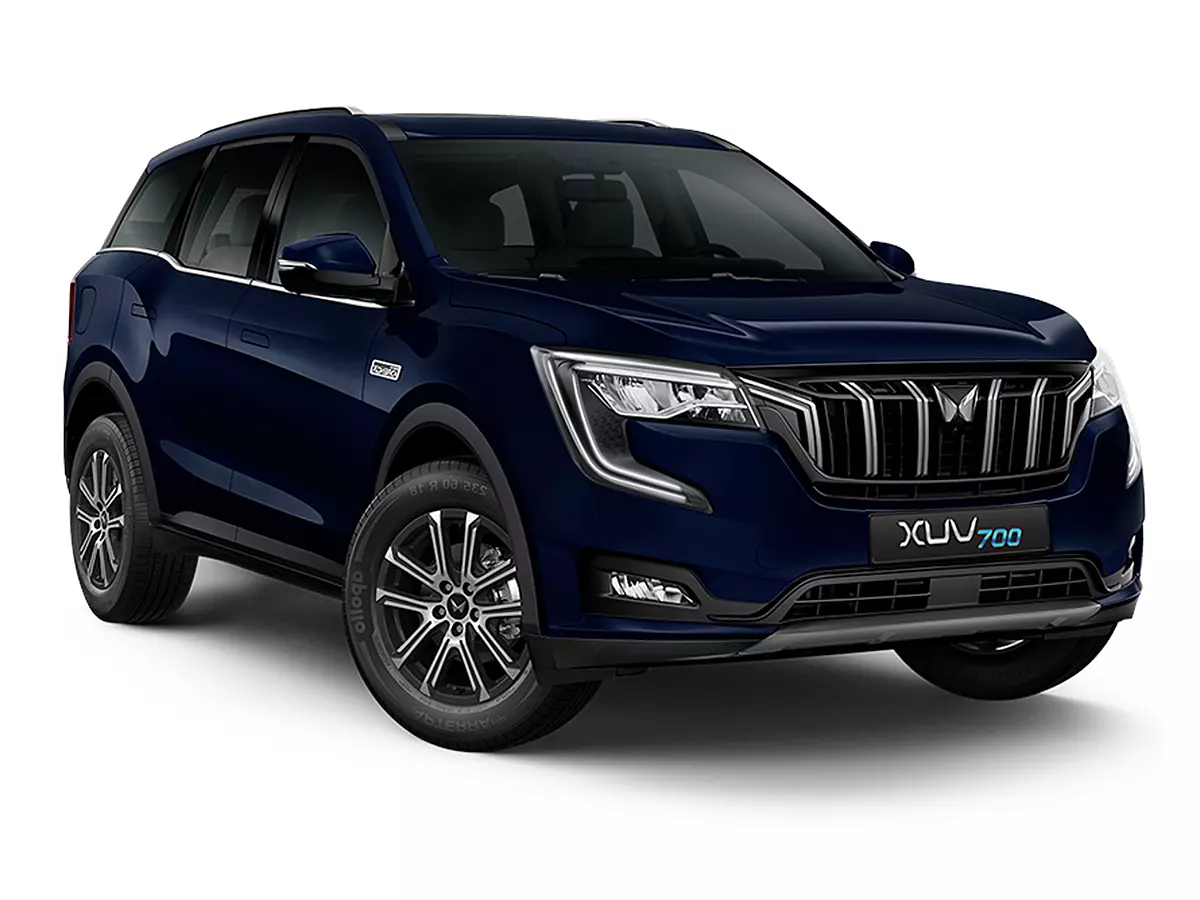
Indian automaker Mahindra manufactured the Mahindra XUV700, a small crossover SUV. The car is expected to take the place of the XUV500 when it is unveiled in August 2021. It was initially intended to be the next-generation XUV500, but the company changed its mind.
But because it intended to diversify its lineup of SUVs, Mahindra chose to re – position the model nomenclature. The innovative Mahindra logo, that is only used on their SUV products, is used for the first time by this manufacturer.
| Mahindra XUV 700 Variants |
| AX3 AT |
| AX3 Diesel AT |
| AX5 AT |
| AX5 Diesel AT |
| AX5 7 Str Diesel AT |
| AX7 AT |
| AX7 Diesel AT |
| AX7 Diesel AT Luxury Pack |
| AX7 Diesel AT Luxury Pack AWD |
| MX Petrol |
The Mahindra XUV700 comes in 5 different colours: Everest White, Dazzling Silver, Electric Blue, Red Rage, and Midnight black.
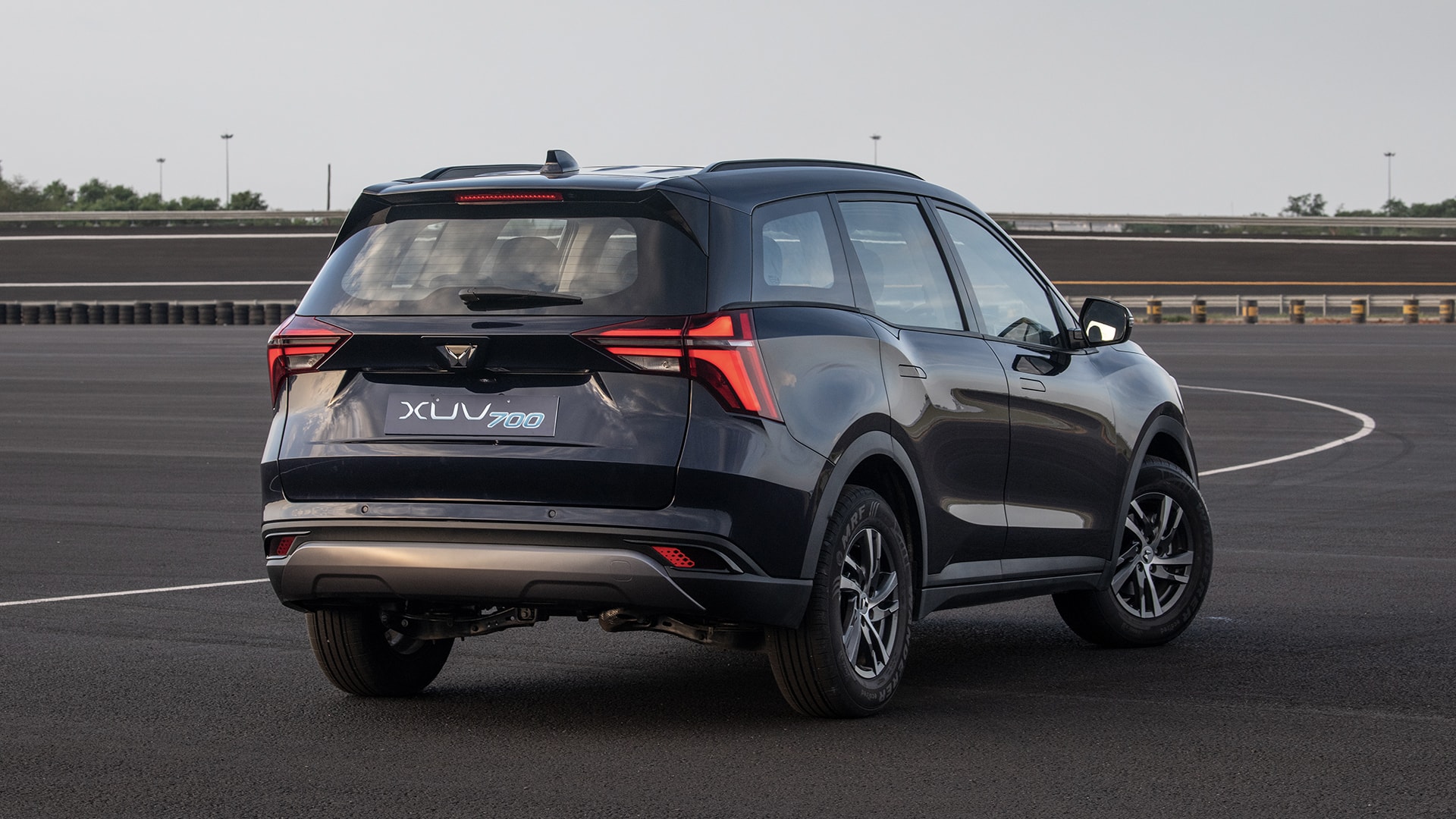
With relatively clean lines and a more well-balanced appearance, the XUV700’s styling is a mature advancement of the XUV500. It has a new strong grille with twin vertical lines, a muscular bonnet, and a lower seat than in its predecessor (by 30mm), all of which increase its road presence. The way the outer vertical bars curve and flow through into the headlight cluster is a nice touch. Mahindra’s new “Twin Peaks” logo, which intriguingly will only adorn the SUV range of the manufacturer, introduces itself on the XUV700 and is displayed boldly in the core of the grille.
The styling of the XUV700 is an evolved version of the XUV500 with more refined lines and a balanced appearance. It has a powerful bonnet, a new grille with twin vertical bars that is strong and gives it a lot of road presence. It sits 30mm lower than its predecessor. It’s a nice touch how the outer vertical bars curve into the headlight cluster. Mahindra’s new “Twin Peaks” logo, which intriguingly will only be used to adorn its SUV lineup, makes its debut on the XUV700 and is prominently displayed in the centre of the grille.
The arrow-shaped tail lights at the back are eye-catching, but their design makes them look like they belong on another vehicle. This is an illustration of the styling’s lack of coherence and consistency, which is still evident in the excessively fussy DRLs and oversized wheel arches that significantly lower the 18-inch wheels.
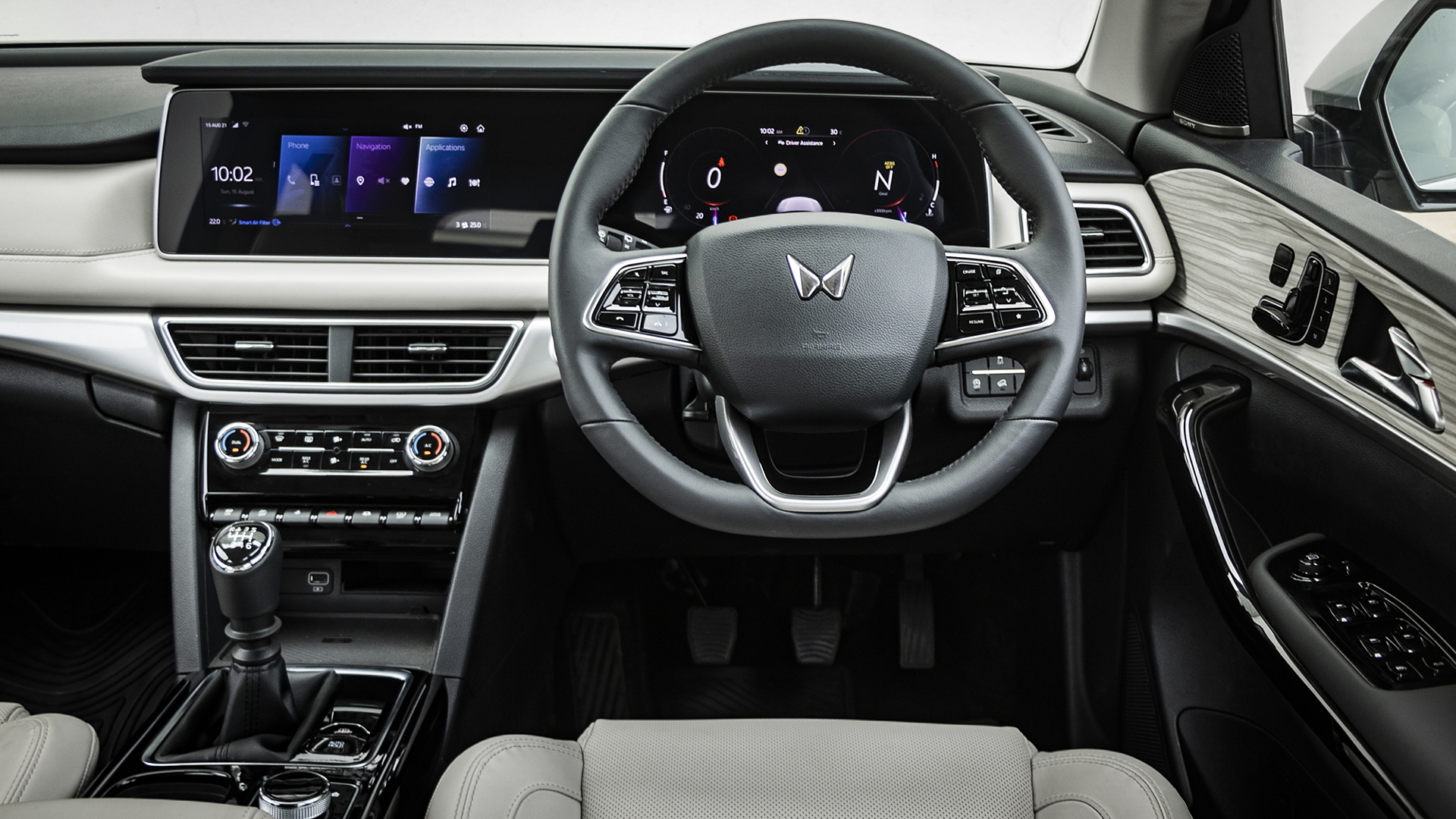
The interior decor is simpler, and the focal point is a display screen that spans half of the dashboard. This tablet, which resembles a Mercedes, has a 10.25-inch central screen and an entirely digital instrument panel. Consumers will love it because it has a very upscale appearance and is available on all trim levels save for the base model, which has a smaller 8.0-inch touchscreen screen and a 7.0-inch instrument panel instead.
Although the cluster is a carryover from the 500, Mahindra has thankfully kept the HVAC control buttons and dials. There is a stylish bank of toggle-like buttons for some essential functions, as well as a rotary control on the centre console that frees you from using the screen exclusively.
The two shelves for two devices, one being a wireless charger, in the centre consoles are a really smart addition. Despite the fact that there are also cupholders on the dashboard behind the gear lever, accessible storage for two devices is probably more crucial in the smartphone era.


Mahindra has recently focused a lot of attention on safety, and its 5-star ANCAP-rated XUV300 can now claim to be India’s safest vehicle. Even though the XUV700’s crash test results aren’t yet available, expect a very good outcome nonetheless. But more importantly, the company has made significant investments in active safety, and the XUV700 has a very complete ADAS package, which makes it unique in the segment.
Additionally, a cutting-edge customised safety alert that you can programme with the voice of an adored one will alert you to slow down once you reach a specific speed! How awesome is that?
Driver drowsiness detection, automatic high beam assistance, and booster headlights that boost illumination above 80 kph are additional active safety features; according to Mahindra, the lumens and spread do not go over the allowed limit. Seven airbags, along with a knee airbag, make up the passive features, while ABS and ESP complete the active safety components.
 Both the 6-speed manual and automatic gearboxes are offered for the available petrol and diesel engines. The 2.2-liter mHawk engine in higher variants produces 185 horsepower, whereas the 155 horsepower diesel engine in the base model of the XUV500 remains. This places the XU700 diesel ahead of the Hyundai Alcazar, which has a 1.5-litre diesel engine with 115 horsepower, and the Hector Plus and Safari, which both have a 2.0-liter diesel engine with 170 horsepower from Fiat.
Both the 6-speed manual and automatic gearboxes are offered for the available petrol and diesel engines. The 2.2-liter mHawk engine in higher variants produces 185 horsepower, whereas the 155 horsepower diesel engine in the base model of the XUV500 remains. This places the XU700 diesel ahead of the Hyundai Alcazar, which has a 1.5-litre diesel engine with 115 horsepower, and the Hector Plus and Safari, which both have a 2.0-liter diesel engine with 170 horsepower from Fiat.
Its new petrol engine which takes the place of the 2.2-litre, 140hp XUV500 petrol engine is the show-stopper in this segment, though. The new “mStallion” 2.0-liter turbo-petrol produces an impressive 200 horsepower, and the XUV700 also claims the title of most powerful vehicle in this comparison because the Safari is a diesel-only model, the Hyundai Alcazar’s 2.0-liter naturally aspirated engine produces 159 horsepower, and the MG Hector Plus uses a 1.5-liter turbo-petrol with 143 horsepower.
So it should come as no surprise that piloting the XUV700 is a complete joy. Mahindra focused the majority of the review drive at its enormous new test facility, and the distance from Mahindra Research Valley to the testing centre was only a short dash. Although we would have preferred to experience more driving in the real world, the high-speed track allowed us to fully appreciate the powerful performance.
The best Mahindra XUV 700 variant would be MX.
| Model | Mahindra XUV 700 |
| Engine | 2.0L Turbo Petrol |
| Fuel Tank | 60 Liters |
| Torque | 380Nm |
| Transmission | 5-Speed Manual/ 5-Speed AMT |
| Drive Configuration | FWD |
| Mileage | 12.25 Km/L |
| Curb Weight | 1960- 2040 Kg |
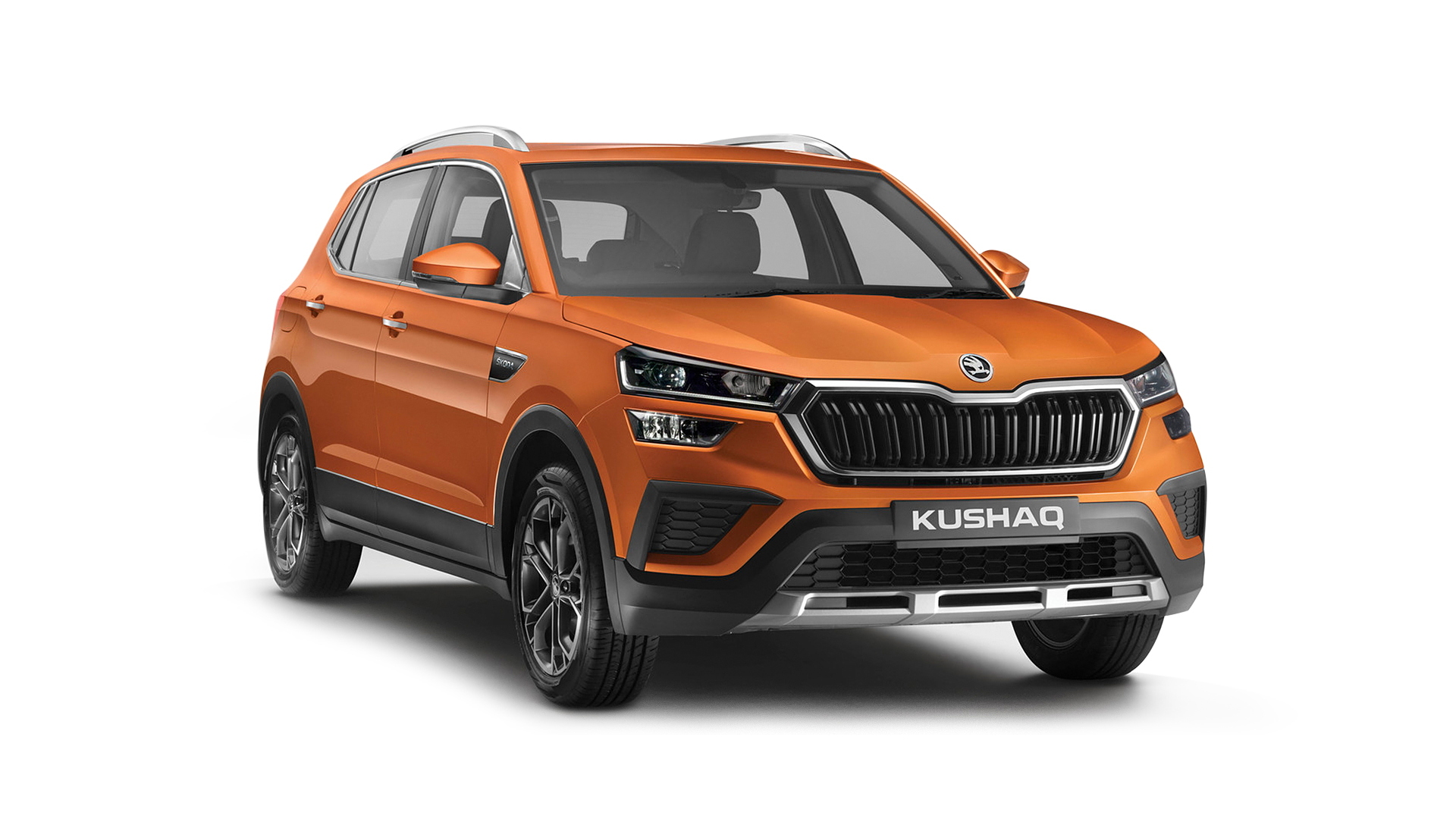
It is the first model created as part of “India 2.0,” a revamp of Skoda’s operations in India with the aim of helping the Czech automaker (as well as the VW Group) build a long-lasting and successful company. The Skoda Kushaq, which has 93% local content, is also the first in a line of highly localised goods created and tailored for Indian tastes, needs, and—most importantly—budgets. And historically, the biggest challenge for international automakers has been fitting products into the pocket of the Indian car buyer, which is arguably the smallest in the entire world. Skoda is all too aware of this, having previously produced excellent vehicles like the Fabia and Yeti that were unsuccessful due to price.
| Skoda Kushaq Variants |
| 1.0 TSI Style Anniversary Edition |
| 1.0 TSI Style AT Anniversary Edition |
| 1.5 TSI Style Anniversary Edition |
| 1.5 TSI Style DSG Anniversary Edition |
| 1.0 TSI Monte Carlo |
| 1.0 TSI Monte Carlo AT |
| 1.5 TSI Monte Carlo |
| 1.5 TSI Monte Carlo DSG |
| 1.0 TSI Ambition Classic |
| 1.0 TSI Ambition Classic AT |
| 1.0 TSI Style 6 Airbags AT |
| 1.5 TSI Style 6 Airbags DSG |
| 1.0 TSI Active, 1.0 TSI Ambition |
| 1.0 TSI Ambition AT |
| 1.0 TSI Style Non Sunroof |
| 1.0 TSI Style |
| 1.0 TSI Style AT |
| 1.5 TSI Style |
| 1.5 TSI Style DSG. |
Skoda Kushaq is available in 7 different colours – Brilliant Silver, Honey Orange, Candy-White-With-Carbon-Steel-Painted-Roof, Tornado-Red-With-Carbon-Steel-Painted-Roof, Carbon Steel, Tornado Red and Candy White.
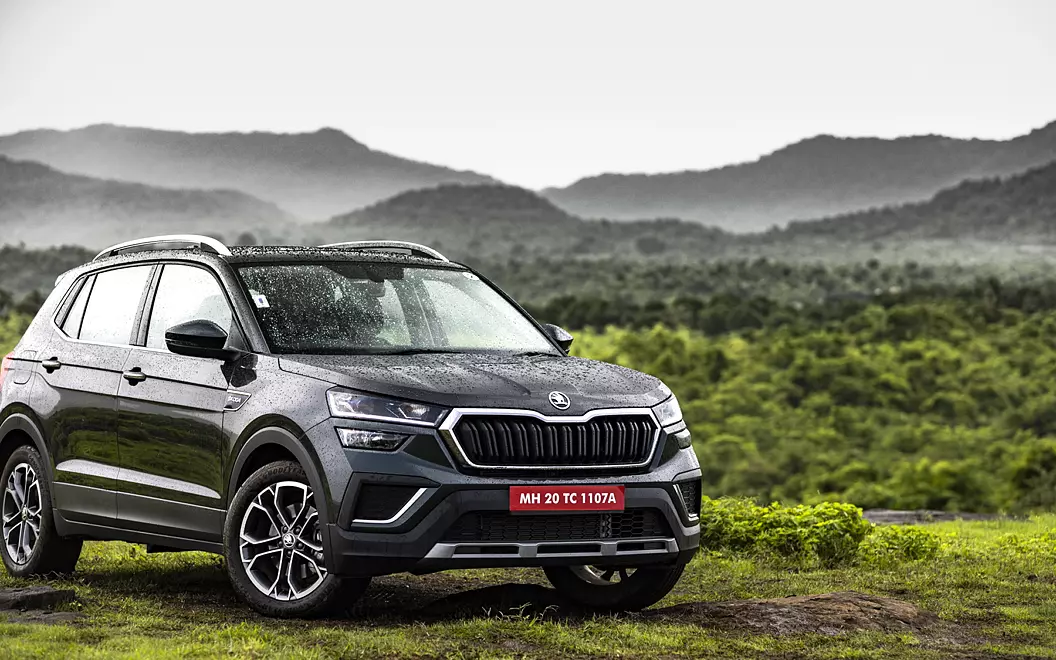
The design, which is very Skoda, doesn’t hold back. The tightly skinned body is covered in cuts and creases, and the headlights, which feature LED strips and crystal elements, neatly peel back from the recognisable Skoda signature grille. The Kushaq appears best and even larger than it is when seen from the front.
Even though the 4.2-meter-long Kushaq isn’t the biggest SUV in its class, its 2,651mm-long wheelbase, combined with its short overhangs, gives it the proper proportions and a purposeful stance. The 17-inch “Atlas” alloy wheels are gorgeous and very European, and Skoda has worked hard to serve them up with an Indian flavour as well.
The Kushaq’s rear has also been raised by Skoda, making the roof flat rather than arched, and the upright ‘C’ pillar, a la an SUV, is now in the right place with the chrome accent. Although the back is less impressive than the front, the three-dimensional taillights with their crystalline structure do catch your attention. The body’s taut, tightly skinned appearance gives the impression that it is smaller than it actually is, if there is a drawback.
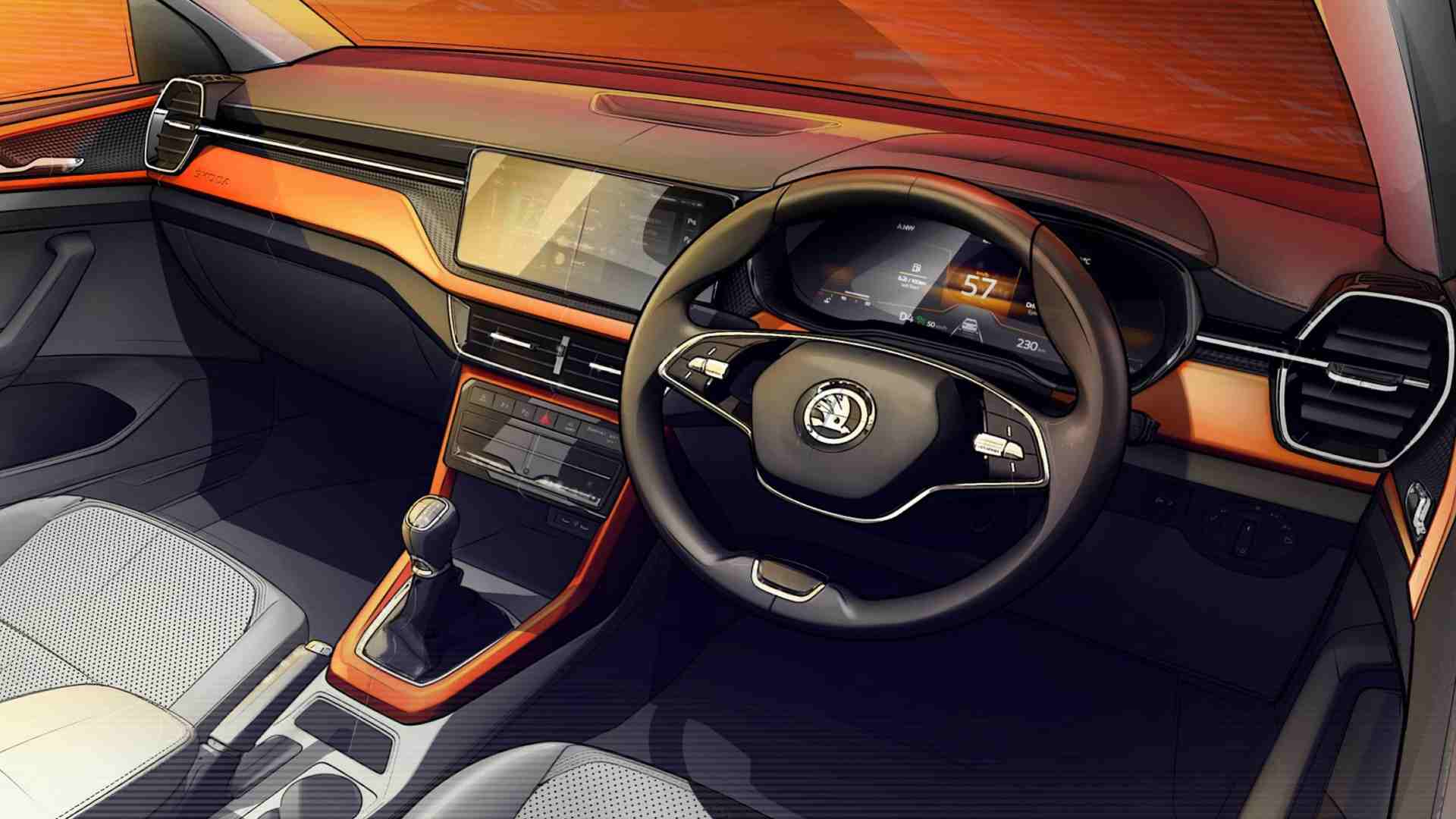
The stylish two-spoke steering wheel from Skoda feels nice and chunky in your hands and is similar to the one found in the newest international Skodas. It has a floating hub and stylish chrome roller controls. In fact, the beautifully crafted wheel is the only aspect of the otherwise Indianized cabin that feels European.
The Kushaq’s dashboard, which was specifically created for India, has simple, horizontal lines and some intriguing, three-dimensional elements that liven it up nicely. The dash’s multi-layered and multi-textured strip adds depth, while the hexagonal chrome-lined vents stand out nicely. The overall design of the cabin is straightforward and practical, and the light materials give it an airy feel. The doors also close with a satisfying thunk, but it’s when you start prodding around the cabin that you quickly realise where Skoda has taken the short cut. The rest of the plastics fall short of the standards for the class set by the Kia Seltos, even though the dashboard top appears to be reasonably high-end.
Comfort is of the highest order in the roomy cabin, and the seats are well made with the proper amount of firmness. The under-thigh support and generous bolstering in the front seats are plentiful. Finding your ideal driving position is simple thanks to the pedals’ ideal placement and a steering wheel that can be adjusted to fit your size and weight. Although not powered, the front seats are cooled to meet class requirements, which further increases comfort.
Additionally, there is a lot of storage space in the cabin. Aside from the roomy glovebox and spacious door pockets, there is also a square elbow box and two cupholders, the latter of which can hold a bottle while you use one hand to twist the cap open. There is a large rubberized tray with a wireless charging pad, and the backs of the seats have small phone pockets sewn into them.

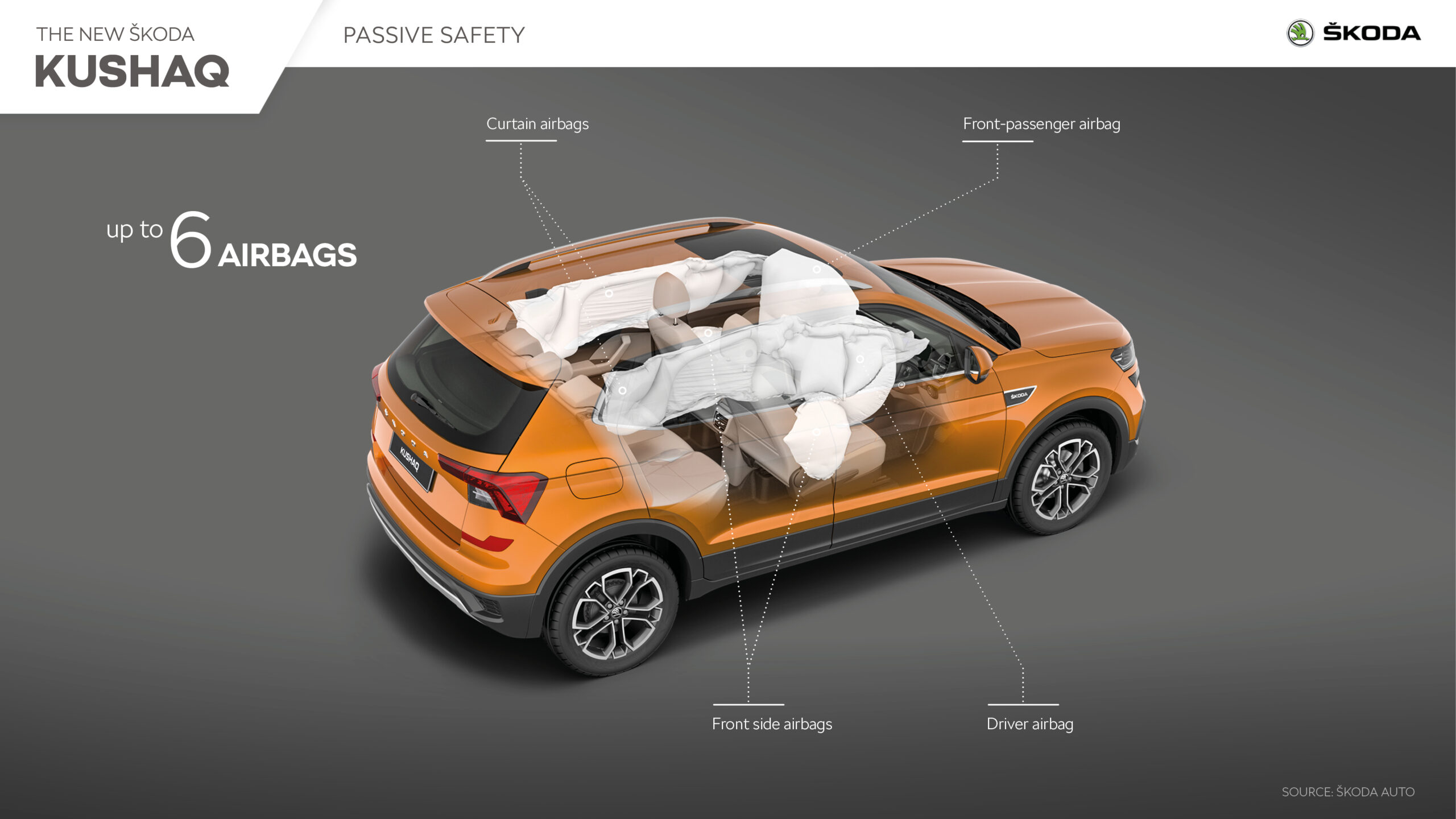
For both adult and child occupant protection, the SUV is the first made-in-India vehicle to receive a flawless five-star rating. We anticipated the Kushaq to pass crash tests with flying colours given how well-built and engineered Skoda vehicles are. However, it is clear from the results of the recently updated and stricter Global NCAP protocols that the Kushaq has aced it and is currently one of India’s safest vehicles. The SUV’s ability to accomplish this feat is made possible by a number of safety features and a well-thought-out, crash-absorbent body structure.

With 150 horsepower and 250 pound-feet of torque, the 1.5 litre TSI engine is the most potent in its class. In addition, the Kushaq 1.5 is the fastest when coupled with a quick-shifting 7-speed twin-clutch DSG. It sprints to 100kph from rest in just 9.54 seconds, outpacing the Creta and the Seltos by a small margin. The additional urge is immediately felt when you flex your right foot. It starts easily from a standstill, accelerates quickly after moving off, and the quick upshifts combine to produce an almost continuous burst of power. Although the VW DSG is genuinely impressive, it could be a little smoother.
The 1.5-liter engine is smooth and loves to rev, but it can be a little noisy at the redline due to the car’s poor overall sound insulation (there is no sound shield under the bonnet). In fact, you have to ignore road noise on a rough surface, and there is also some wind noise when moving quickly.
The best Skoda Kushaq variant would be Ambition Classic.
| Model | Skoda Kushaq |
| Engine | 1498 cc, 4 Cylinders Inline |
| Fuel Tank | 50 Liters |
| Torque | 250Nm |
| Transmission | Automatic – 7 Gears |
| Drive Configuration | FWD |
| Mileage | 17.7 Km/L |
| Curb Weight | 1305 Kg |
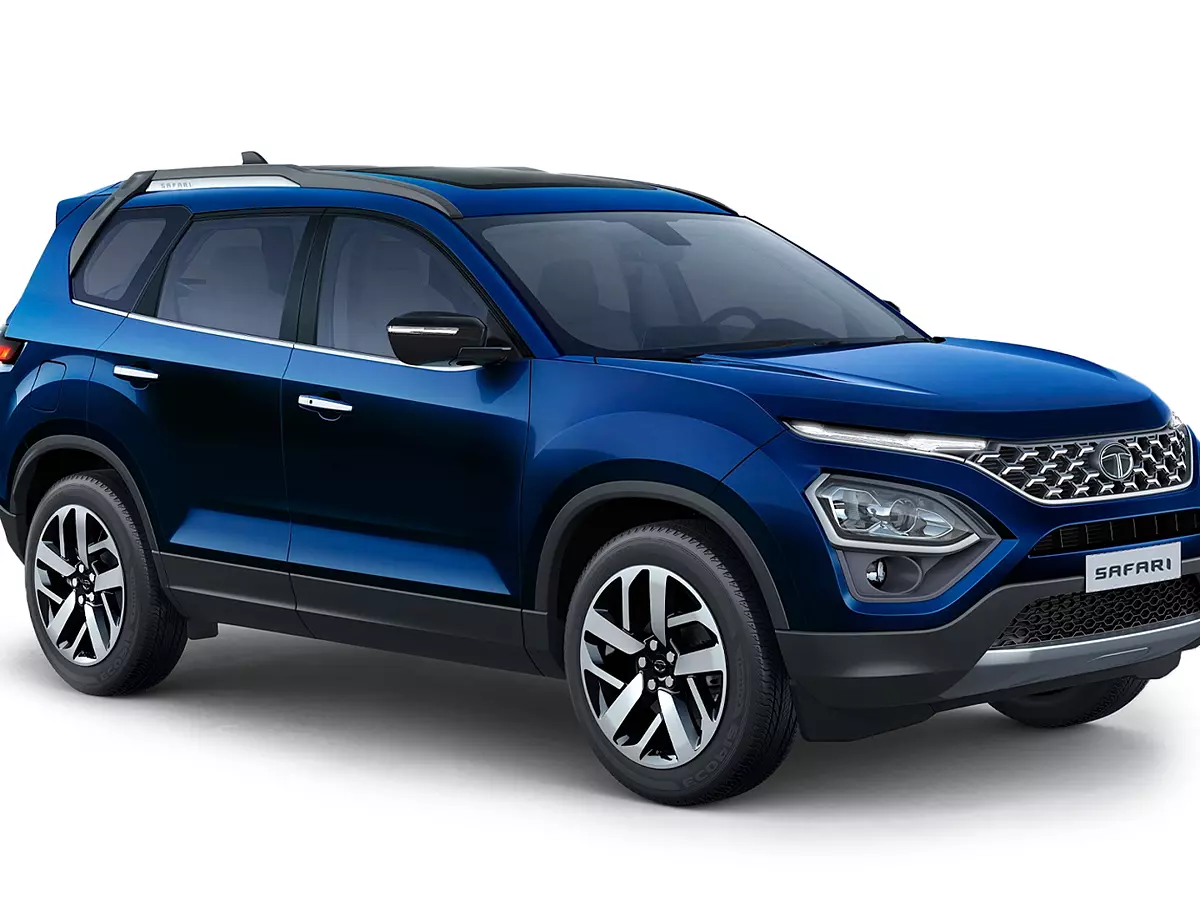
With a brand-new SUV, Tata has revived its marquee nameplate, the Safari. Land Rover’s D8 platform is used in part by the Tata Safari, which Tata has given the name OMEGARC. This platform is also used by the Harrier SUV.
| Tata Safari Variants |
| XE |
| XM |
| XMA |
| XT |
| XT Plus |
| XZ |
| XZ Plus |
| XZA |
| XZA Plus. |
Royal Blue, Tropical Mist, Daytona Grey, Orcus White, and Tropical Mist Adventure are the five paint options that are offered. Black and White are the interior colours of the Safari.

The only real distinction is the new, chrome-finished tri-arrow pattern for the Safari’s grille, which shares the split headlamp arrangement. However, if you look at it from another angle, you won’t confuse the two. The Safari has a higher roofline, a longer rear overhang, a full-size rear quarter glass, and is also more upright in the back to accommodate a third row of seats. Even the tail lights differ, despite being treated similarly.
The Tata’s hefty roof rails, which are fashioned to resemble a stepped roof, a distinctive feature of the original Safari, add some character. The new Safari is 63mm longer and 80mm taller than a Harrier, but its width and wheelbase are the same. The 18-inch diamond cut alloy wheels only add to the new Safari’s overall great stance. Oddly, the rims are the same design as the Harrier’s, despite being a size larger.

Things are comfortable inside. You’ll feel right at home in the Tata Safari if you’ve ever driven a Tata Harrier. The two models share a stylish dashboard, but the Oyster White interior theme of the top-spec Safari adds the necessary distinction. Although the interior now has a very upscale appearance, buyers with a fetish for cleanliness will find it extremely difficult to keep the light leatherette seats spotless. The convenient electronic parking brake, which takes the place of the clumsy manual handbrake that resembles a thrust lever, is a welcome addition to the top-spec Safari.
You have a commanding view of the road, just like on the updated Harrier, and much of what you touch inside is of high quality. Although panel fit has significantly improved since the first Harrier, some ergonomic problems still exist. For instance, the driver’s left knee often collides with the centre console. It would be nice if Tata updated the infotainment system as well. By today’s standards, the 8.8-inch touchscreen appears to be a bit small, and even features like the rear view camera could have benefited from the addition of a few more pixels.
The middle row is where you’ll notice a connection between the old and new Safaris. The new Safari has theater-style seating, just like the original, with the second row seats being higher than the ones in the front. You have excellent visibility not only out the side windows but also through the front windscreen thanks to the elevated seating. The Safari comes equipped with seven seats, the middle row of which is a bench. The seat is extremely comfortable, and the slightly higher H point (compared to the Harrier) has resulted in the ideal seating position.
In addition, top-spec The six-seat Safaris option includes captain’s chairs in the middle row. These seats have a fold-down armrest, a wide range of adjustment, and a boss mode. They are also beautifully cushioned. The seats aren’t the widest available, so passengers with larger frames may find them uncomfortable. Sunblinds for the back windows are also absent, and finding the USB ports near the centre tunnel is a real challenge.
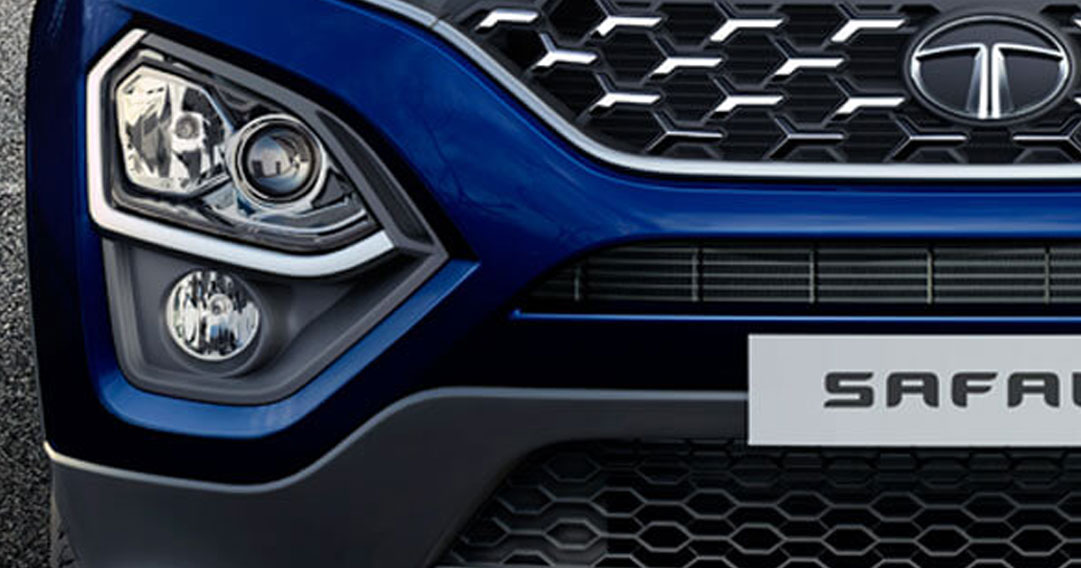

Speaking of safety, the vehicle has all-disc brakes and 6 Airbags (including side airbags for the driver and co-driver, side seat airbags, and curtain airbags). List a few safety features, such as the seat belt reminder system, child seat ISOFIX anchor points, electronic park brake with auto-hold, and tyre pressure monitoring system. Features like ABS, EBD, Corner Stability Control, Hill Hold Control, Roll Over Mitigation, etc. are available to increase driving safety.
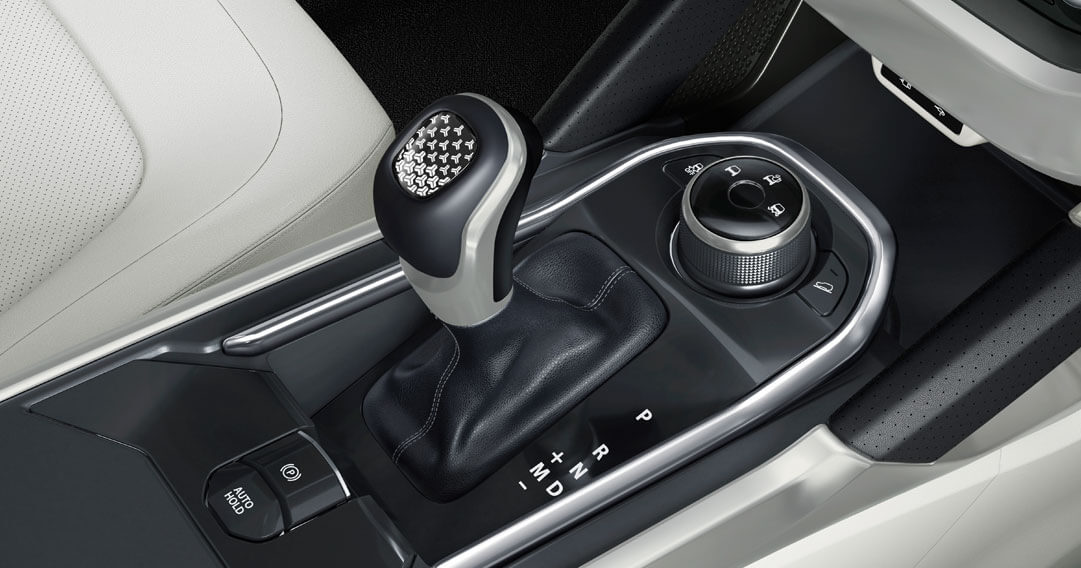
The Harrier’s 170 horsepower, 2.0-liter, four-cylinder diesel engine powers the Tata Safari, which also has access to the same 6-speed manual and automatic transmissions. It should come as no surprise that driving is also very similar. Although there is good power, the manual transmission has a heavy clutch that is not sufficiently progressive and difficult-to-slot gears.
The Safari automatic is without a doubt the one to purchase. The 6-speed torque converter automatic transmission from Hyundai pairs best with the Kryotec 170 diesel engine from Fiat. The gearbox is perfectly tuned to the characteristics of the engine; gearshifts are prompt and seamless; and it is also sufficiently responsive to manual shifts made with the gear lever. The engine does groan and moan when you load it, and it starts out sounding a little gravelly, but things calm down quickly enough. You’ll appreciate the large amount of power and the ease with which the engine accelerates the large Safari. Driving modes that change power, such as Eco, City, and Sport, also contribute to optimising the driving experience.
Top model of Tata Safari is XZA+ Gold 6S
| Model | Tata Safari |
| Engine | 1956 cc, 4 Cylinders Inline |
| Fuel Tank | 50 Liters |
| Torque | 350Nm |
| Transmission | Manual- 6 Gears |
| Drive Configuration | FWD |
| Mileage | 16.1 Km/L |
| Curb Weight | 1826 Kg |
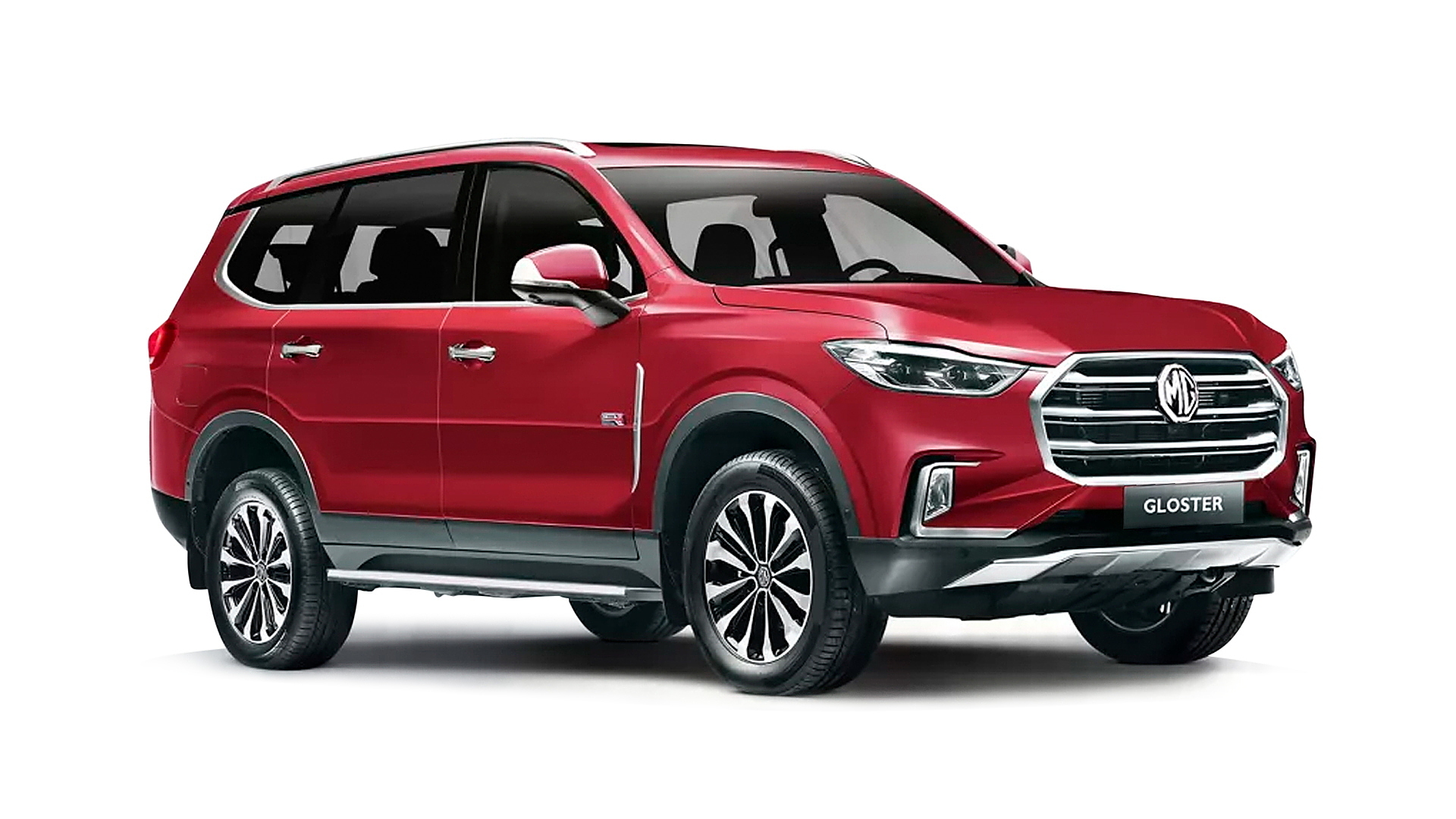
The MG Gloster is a sibling brand of MG’s Maxus and is a large, three-row, body-on-frame SUV. The Gloster, which is essentially the Maxus D90 in China and the LDV D90 in Australia, is owned by the same parent company, SAIC. It has been rebranded for India and is being marketed as the Morris Garages (MG) flagship model under the appropriately British-sounding name Gloster.
| MG Gloster Variants |
| Super |
| Smart |
| Sharp |
| Savvy |
MG Gloster is available in 4 different colours – Deep Golden, Metal Black, Metal Ash, Warm White.
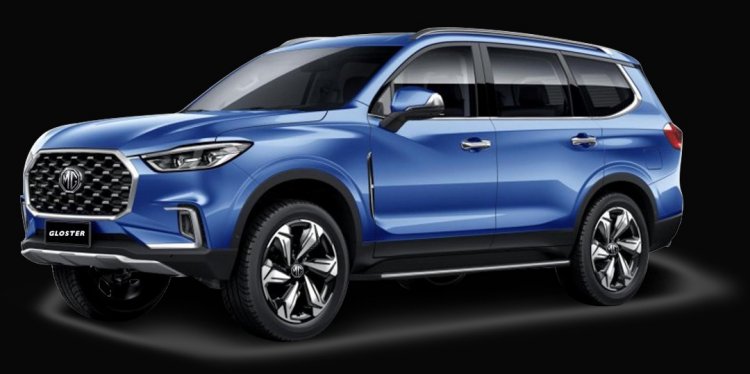
Regarding the dimensions, we weren’t kidding. Only the 1,926mm width is slightly less than the Alturas G4’s 1,926mm width, making its 4,985mm length, 1,867mm height, and 2,950mm wheelbase the best in class. And this establishes the tone for what the Gloster seeks to provide—a little bit more of everything—than the large SUVs we’re accustomed to.
The 19-inch alloy wheels on this truly enormous SUV, which are themselves a size larger than the competition, almost appear to be dwarfed in the enormous wheel arches, demonstrating the SUV’s significant road presence.
Although there is a lot of chrome used throughout the vehicle (including on the alloy wheels), it is done in a tasteful manner. For example, the large brushed-metal grille, the sculpted bonnet, and the slim LED projector headlamps are all quite attractive. I also like how the chrome window garnish extends upward at the C-pillar to “join” the roof rails.
The Gloster makes no effort to hide the fact that it is who it is. As many as five badges can be found at the back, including a large MG logo, a 4WD badge, an ADAS badge signifying advanced driver assistance systems, the ‘Internet Inside’ badge found on every MG, and the word Gloster large-printed across the width of the tailgate. Similar to the Hector, MG makes a point of emphasising the brand’s British heritage, as evidenced by the two Union Jack badges that read “Brit Dynamic” and are located on the front flanks.
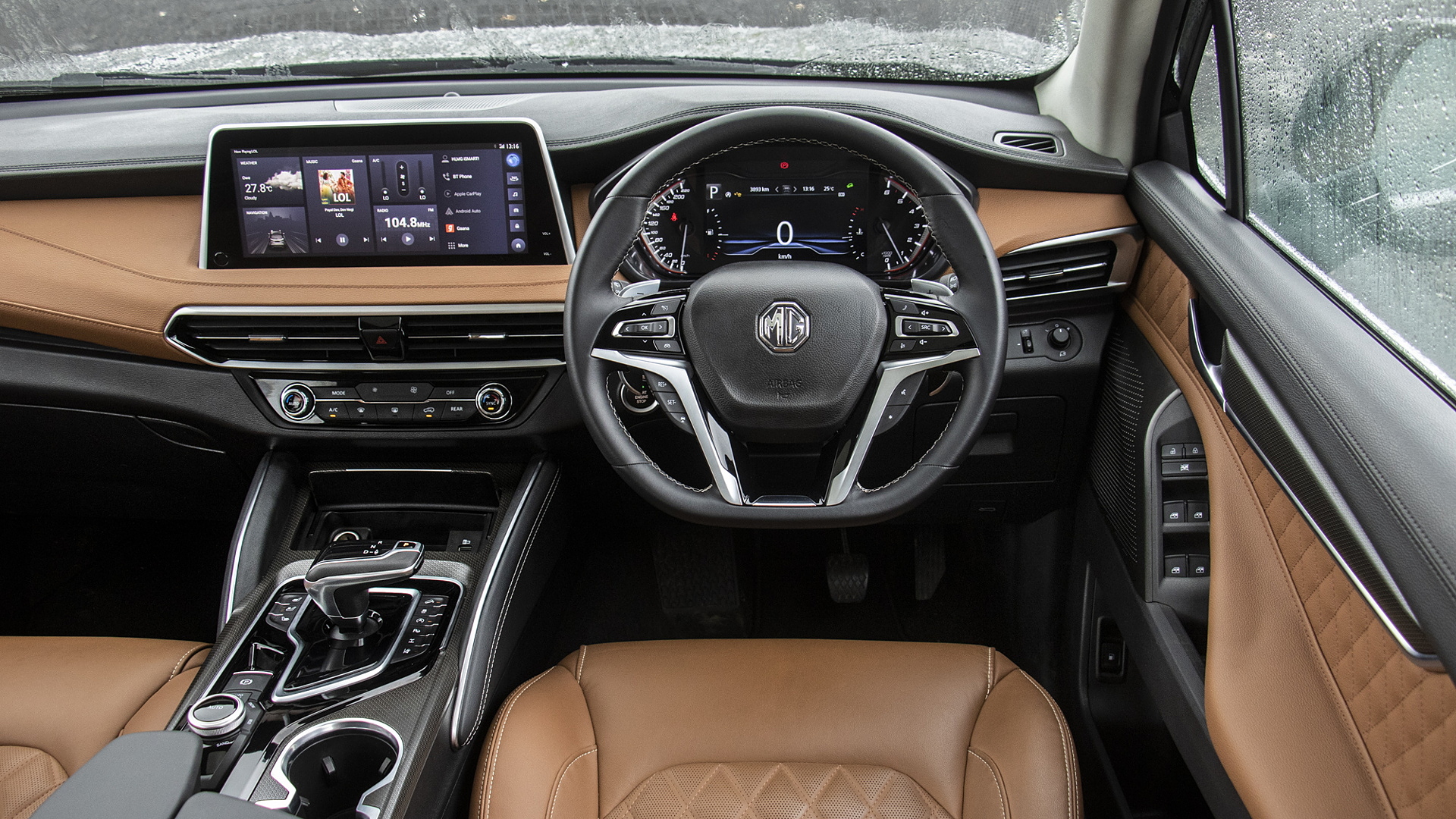
The interiors aim to offer significantly more than other SUVs of this type, if the exterior dimensions do offer a little bit more. You are greeted by a flowing dashboard covered in tan leather with double stitching, brushed aluminium trim, and numerous layers when you open one of the front doors. Although there is more than a passing resemblance to some of the brand’s more recent models, MG buyers would undoubtedly appreciate it. BMW owners, however, might not. In particular, the 12.3-inch touchscreen docked in the dash and the overall design as a whole show this.
The screen is vibrant and colorful, has a respectable resolution, and makes good use of its wide-screen aspect ratio with orderly arranged function “tiles,” but it still isn’t my favourite in the car because it needs a little firm prodding to respond.
The front seats leave a good first impression, much like the dashboard. They are heated, power-adjustable (although the co-driver cannot adjust for height), quite large, and generously cushioned. They are also covered in quilted tan leather upholstery. The driver’s seat goes a little further, offering memory, massage, and seat ventilation.
Cupholders and tablet storage are located in the seat bases. The rear cabin has a third climate zone, and the panoramic sunroof—now larger than ever—has become a standard feature of MG vehicles.
It’s crucial to note that the middle row of the Gloster is by far the most comfortable in its class, which is important for those who primarily rely on a chauffeur or are travelling with families.
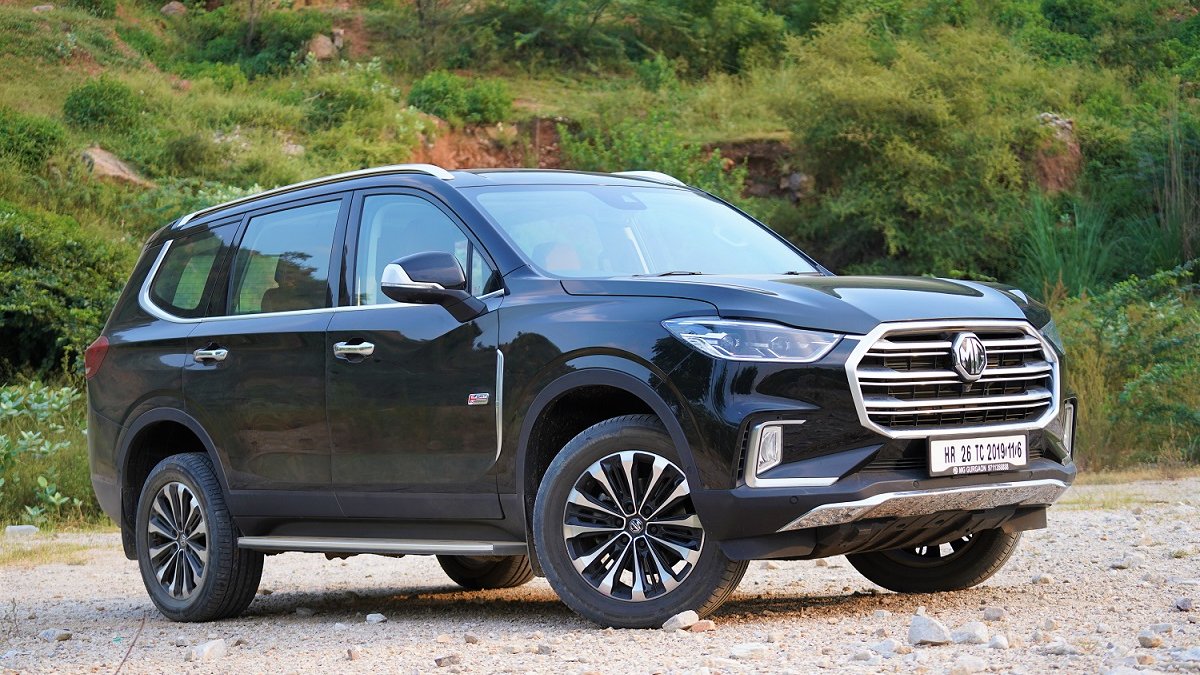
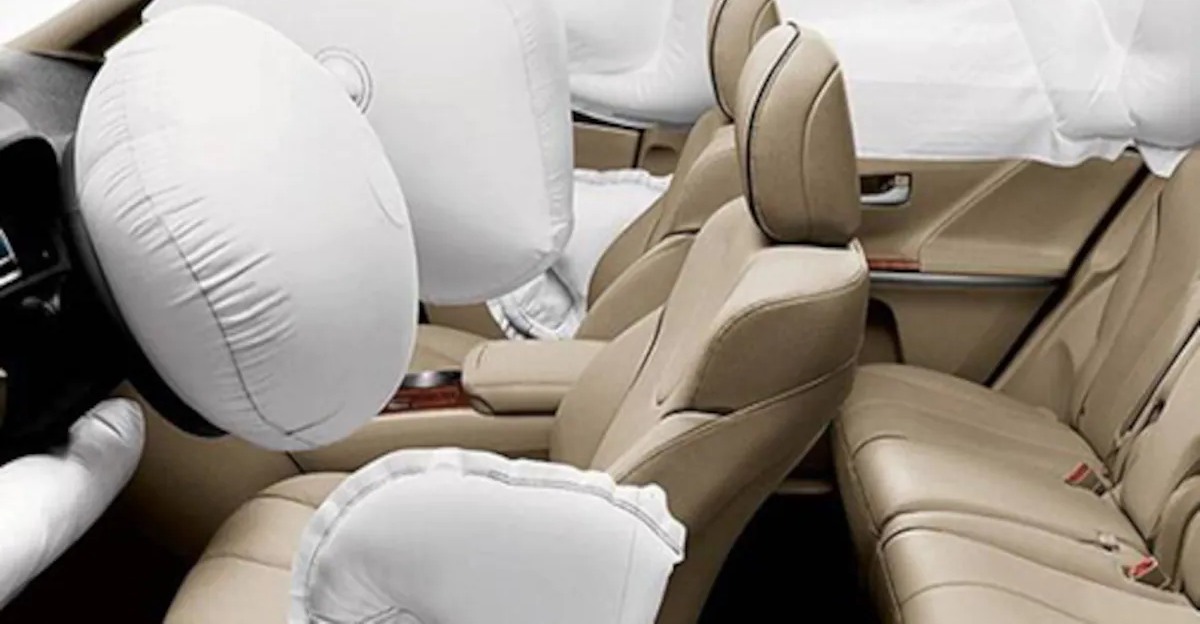
The build quality of the MG Gloster is excellent. At first glance, the SUV appears massive and muscular and is strong and sturdy. The MG Gloster has not yet received global NCAP ratings or crash test results, but it did receive a five-star safety rating in Australia. There are about thirty safety features in the car. Among the safety features are six airbags, brake assistance, ABS with EBD, ESP, and traction control. The first automobile in India to have ADAS was the MG Gloster.
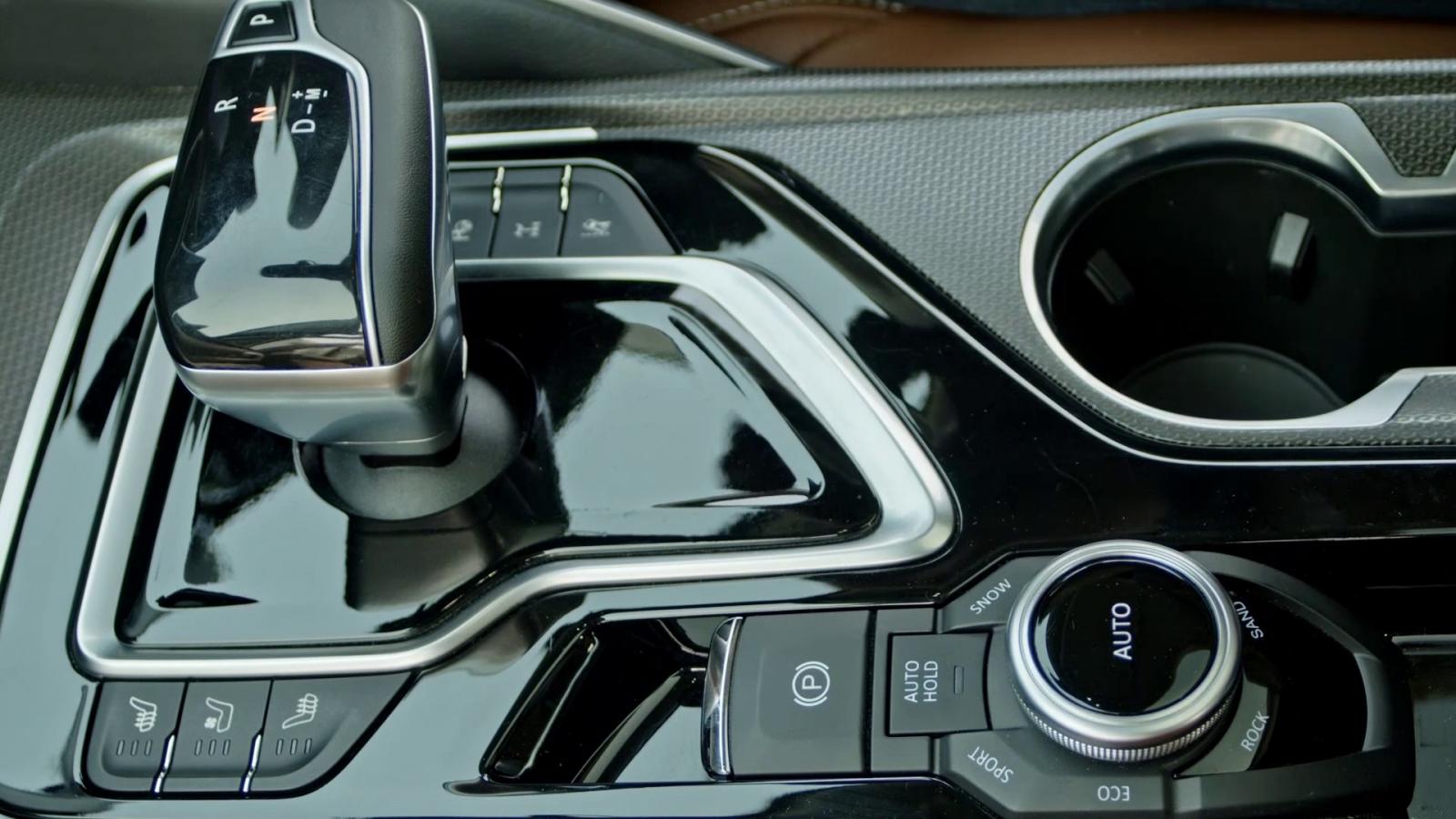
The Gloster’s 1,996cc, twin-turbo diesel engine produces 218 horsepower and 480 pound-feet of torque, which is again the highest output for an SUV of this type. An 8-speed torque-converter automatic provides drive to the rear, with an on-demand 4WD system engaging as needed.
You can lock the rear differential by pressing a button on the centre console, but other than that, the only way to control the 4WD system is by selecting one of four pre-programmed drive modes: sand, snow, rock, or mud. There is no manually selectable low-range or 4WD like in some competitors.
For the Gloster’s on-road performance, there are also Eco and Sport driving modes, but in actual use, we were unable to tell much of a difference in engine or gearbox performance from mode to mode. However, the Gloster can accelerate quickly off the line. Our VBOX testing equipment recorded an impressive 11.21 seconds for the massive SUV’s 0-100 kph time.
The top variant of MG Gloster would be MG GLOSTER Savvy.
| Model | MG Gloster |
| Engine | 1996 cc, 4 Cylinders Inline |
| Fuel Tank | 75 Liters |
| Torque | 373.5 Nm |
| Transmission | Automatic |
| Drive Configuration | RWD |
| Mileage | 13.9 Km/L |
| Curb Weight | 2225- 2465 Kg |
Toyota Fortuner
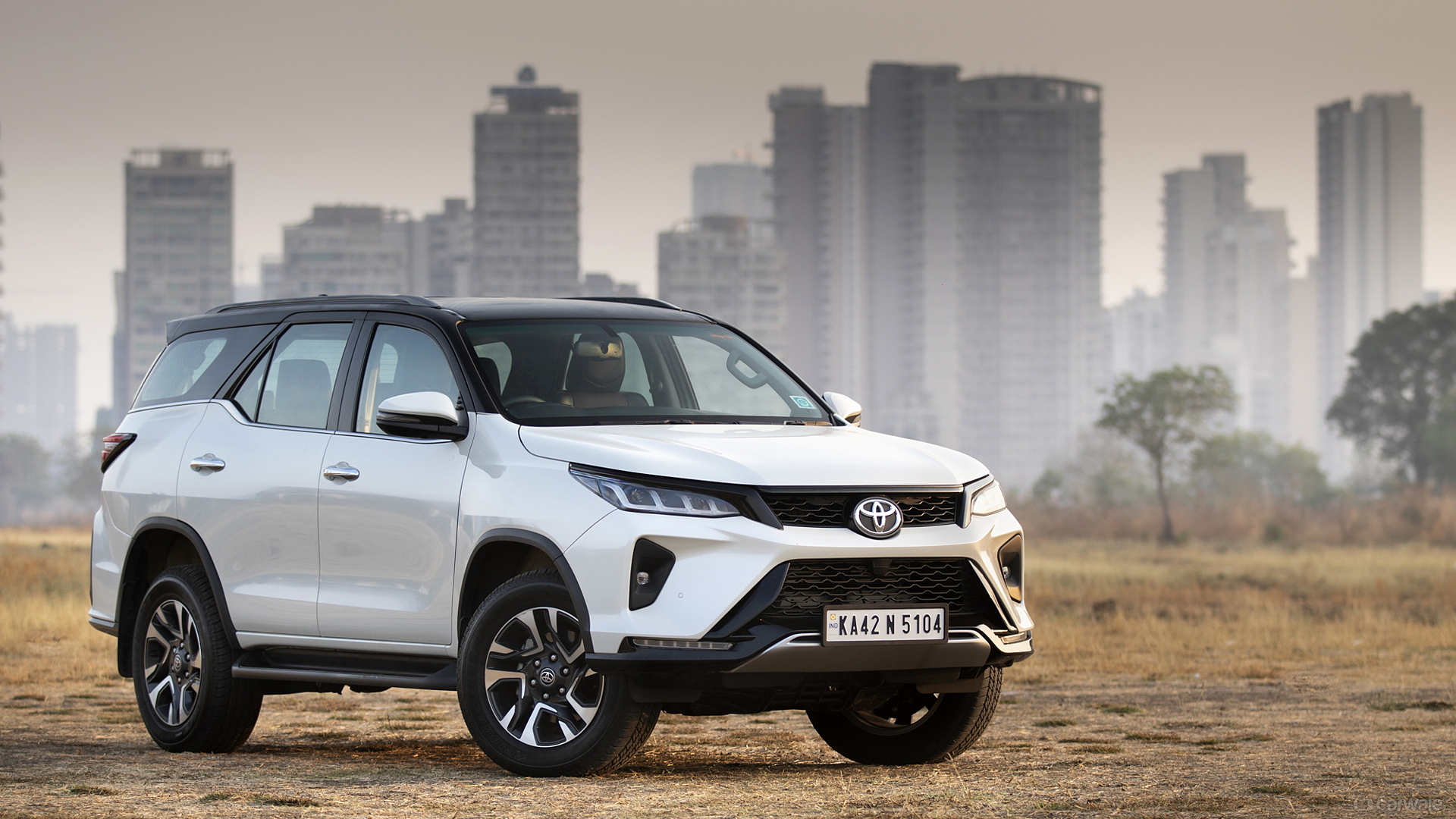
Since its launch in India in 2009, the Toyota Fortuner has consistently ranked as the highest-selling vehicle in the full-size SUV segment. The Toyota Fortuner’s respectable qualities, including its commanding design, superb build quality, potent performance, and cosy interior, are largely responsible for its success. It is not surprising that the Fortuner has managed to stay among the top SUV options for Indian buyers all these years.
| Toyota Fortuner Variants |
| 4X2 AT |
| 4X2 Diesel AT |
| 4X4 Diesel AT |
| Legender |
| Legender 4×4 AT |
| GR S 4X4 Diesel AT |
There are 9 different colour options for the Toyota Fortuner, including Sparkling Black Crystal Shine, Phantom Brown, Super White, Attitude Black, Avant-Garde Bronze, Grey Metallic, White Pearl Crystal Shine, Silver Metallic, and White Pearl Crystal Shine with Black Roof.

The redesigned Fortuner’s front end features a larger, more imposing grille, sleek LED projector headlights, LED DRLs, a new front bumper, new fog lights, and other improvements. A modern design for the facelift version is created by these aesthetic changes. More importantly, these improvements set the facelift apart from the comparatively drab and out-of-date pre-facelift version.The side profile of the new Toyota Fortuner, which is getting a mid-life facelift, doesn’t get as much of an upgrade as the front face. The set of new 18-inch alloy wheels is the only noticeable side update. The wheels are made to look tough and modern.
The Toyota Fortuner features brand-new LED taillights on its back end. The split quad-LED headlights, contrast black roof, and rear Legender badge are exclusive to the Legender model.
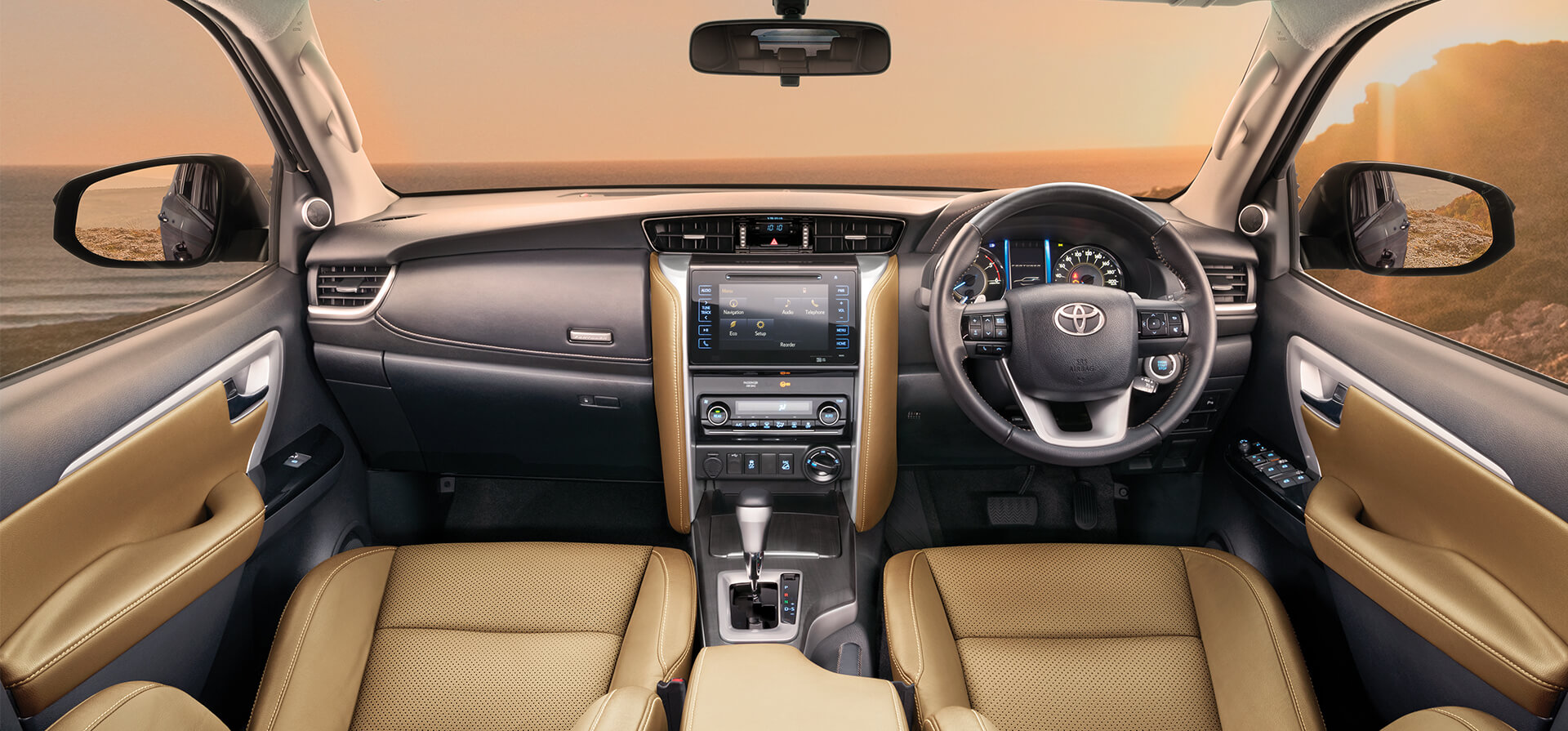
The Toyota Fortuner’s seating arrangement has not changed. The Fortuner will have the same seating arrangement, which still provides plenty of room each of the front row as well as the back row. The driver’s and co-seats driver’s in the SUV are now ventilated to increase passenger comfort. Particularly for Indian vehicle owners who frequently deal with oppressively hot and humid conditions, this characteristic offers a real treat.
Only minor interior design changes are made, but there are a few new items added to the equipment list. An electrically adjustable front seat, semi-digital instrument cluster, dual-zone automatic air conditioning, and a 4.2-inch MID were available on the pre-facelift model. The updated version now includes each of these features. In addition to these already present features, the facelift adds new ones like a larger 8-inch touchscreen infotainment with Apple CarPlay and Android Auto, an 11-speaker JBL sound system, and front clearance sonar.

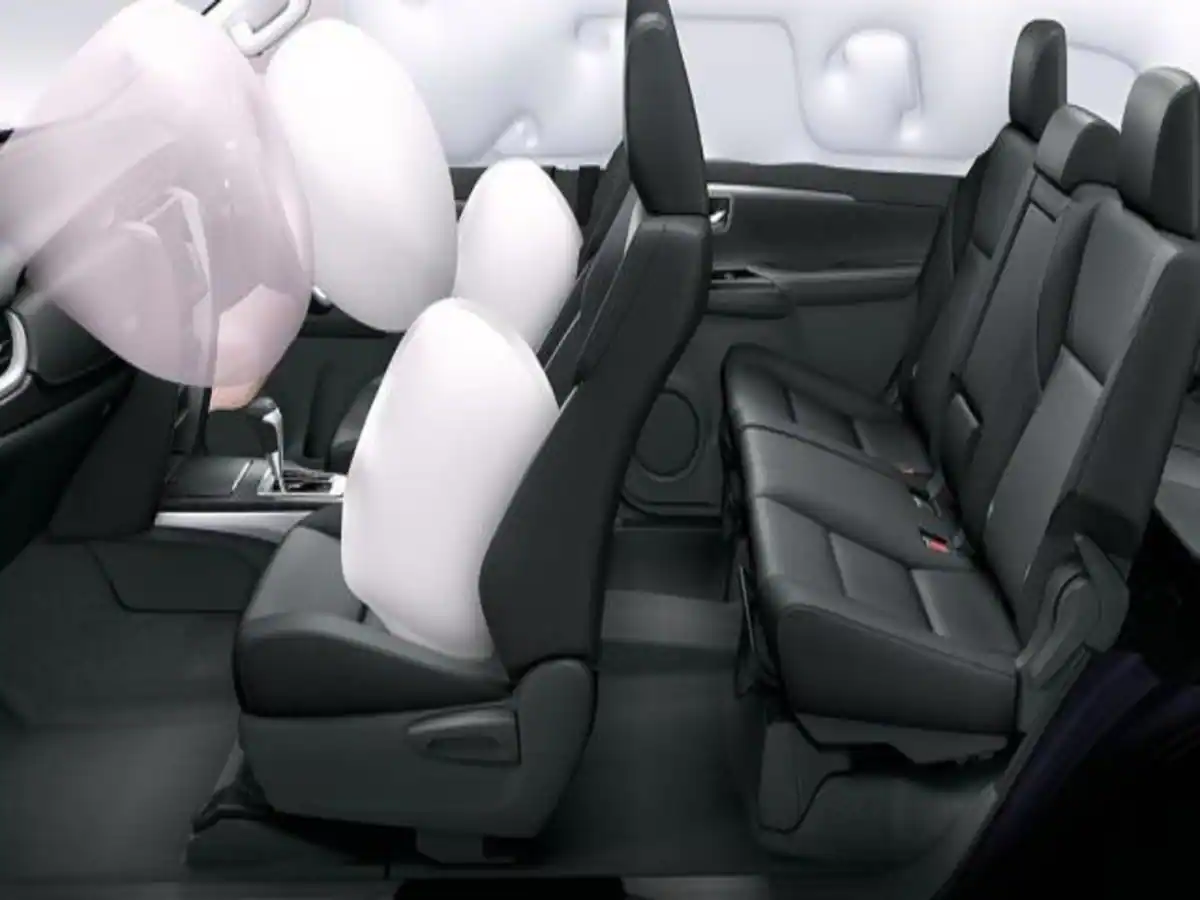
The Toyota Fortuner is equipped with seven airbags, a 360-degree camera view, a lane departure warning, a collision prevention system, and dynamic cruise control. The Fortuner facelift received a perfect score for safety in the most recent ASEAN NCAP test, which is worth noting. When it enters the Indian market, the Fortuner is anticipated to provide that level of protection.

The 2.7-liter turbo petrol and 2.8-liter turbo diesel engines that were available in the Toyota Fortuner before are still available. However, the 2.8-liter turbo diesel engine has been modified to produce more power. It can produce 206 BHP and 500 Nm of torque when paired with a 6-speed torque converter automatic transmission, as opposed to 179 PS and 455 Nm in the version before the facelift. The torque figure drops to 420 Nm when paired with a six-speed manual transmission. With these power specifications, this engine is thought to be the best turbo-diesel in its class. It keeps providing a high level of refinement. The 6-speed manual transmission also provides a quick and smooth shift while driving.
While continuing to produce 166 PS and 245 Nm, the 2.7-liter gasoline engine is the opposite. Six-speed manual and six-speed torque converter automatic transmissions are the two options for transmissions that are available. The gasoline engine is a less common choice for Toyota Fortuner buyers than the diesel model. The refinement provided by this engine is still respectable. Although not the worst in the market, mid-range performance is still not the best.
The best automatic efficient version of GR S 4X4 Diesel AT
| Model | Toyota Fortuner |
| Engine | 4- Cylinder, In-Line |
| Fuel Tank | 80 Litres |
| Torque | 245 NM |
| Transmission | AMT- 5 Gears |
| Drive Configuration | FWD |
| Mileage | 8.0 kmpl |
| Curb Weight | 2180 kg |
In recent years, the SUV market has seen significant growth. It is the most popular vehicle category sold in India after hatchbacks. With this in mind, nearly every brand offers a SUV model, each vehicle utilising the advantages of its own brand. Additionally, several of the vehicles on this list received four or more stars in the Global NCAP safety tests, making them some of the safest new SUVs in India. There is a vehicle that will suit your needs if you want to purchase or upgrade to an SUV.
Check out the latest Car Discounts available across all car brands only at AutoBreeds.
A: Thar, Fortuner, Brezza, XUV700, Nexon are the popular suv cars in india.
A: Brezza, XUV700, Nexon, Creta, and Urban Cruiser Hyryder have a sunroof.
A: The latest SUV cars are EQB, GLB, DEFY, Urus, and Astor In India.
A: The most expensive SUV car is Aston Martin DBX In India.
A: Mercedes-Benz GLB, Mercedes-Benz EQB and Hyundai Creta are the 3 most popular cars in India.
A: The lowest-priced SUV cars in India are Maruti Suzuki S-Cross at ₹ 8.72 Lakh, Nissan Kicks at ₹ 9.5 Lakh and Toyota Urban Cruiser Hyryder at ₹ 10 Lakh.
A: Top 3 upcoming SUV cars in India are Toyota Urban Cruiser Hyryder, Mercedes-Benz EQB and Mercedes-Benz GLB.
A: A sport utility vehicle, also known as an SUV, is a type of car that combines components of on-road passenger cars with characteristics of off-road vehicles, like increased ground clearance and four-wheel drive. SUVs are used differently in different countries, and there is no universally accepted definition of one.
A: SUV, which stands for sport utility vehicle, is essentially a car with off-roading capabilities. The interior may or may not be luxurious. While the Thar is an offroader with little luxury inside but falls under the SUV category, the Fortuner is an SUV that is a very capable offroader and also has luxury inside. A hatchback is a type of car body with a rear door that opens upward to reveal a cargo area. Second row seats in hatchbacks may be foldable. a passenger vehicle with a three-box design, three pillars, and principal volumes divided into sections for the engine, passengers, and cargo. Multi-utility vehicles are known as MUVs. It serves many purposes, and the vehicles in this segment are renowned for their functionality, sturdiness, stability, good looks, and dependability, among other qualities. Mahindra Xylo and the Toyota Innova. A vehicle with multiple uses can transport more passengers and luggage simultaneously.
A: According to a recent research study, SUVs have been shown to be much safer than sedans.
A: Cars with a higher seating capacity – with 8, 9 and 10 seater configurations mostly belong to the SUV category. However, minivans and vans are also spacious with a higher seating configuration. Cars with a higher seating capacity – with 8, 9 and 10 seater configurations mostly belong to the SUV category.
A: There are many expensive SUVs with higher ground clearance than 230mm but on a budget, the Mahindra Thar has the highest ground clearance in India.
A: The best mileage car is the Maruti Suzuki Celerio.
A: Here are the top 3 most popular SUV cars in India.
1. Hyundai Venue starts at ₹ 7.53 Lakh
2. Tata Nexon starts at ₹ 7.69 Lakh
3. Hyundai Creta starts at ₹ 10.27 Lakh
A: Here are newly launched SUV cars- Toyota Urban Cruiser Hyryder, Mercedes-Benz EQB and Mercedes-Benz GLB.
A: The latest SUV cars under 30 Lakh in India for offroading are BYD Atto 3 at ₹ 30 Lakh, Hyundai Tucson at ₹ 27.7 Lakh and Jeep Meridian at ₹ 29.9 Lakh.
A: The prices for the top 5 popular 7 seater cars are:Mahindra XUV700 Price is ₹ 16.80 Lakh, Mahindra Scorpio-N Price is ₹ 11.99 Lakh, Toyota Fortuner Price is ₹ 32.58 Lakh, Mahindra Scorpio Classic Price is ₹ 11.99 Lakh and Maruti Suzuki Ertiga Price is ₹ 8.41 Lakh.
A: The most comfortable compact SUV are - Tata Nexon, Mahindra Thar, Kia Sonet, Renault Kiger.
A: The most powerful compact SUV include - Hyundai Venue, Kia Sonet, Mahindra XUV700, Tata Nexon.
A: Most of the SUVs in the market are not a good choice for off-roading.
A: Yes, there are a lot of choices in 7 seater SUV like Hyundai Palisade, Subaru Ascent, etc.
A: The primary distinction is in the type of drive; an SUV can either have a 2 wheel drive system or be capable of switching to a 4 wheel drive; a 4x4 signifies it is a 4 wheel drive. Rest of the features are more or less same.
A: Most of the SUVs are 6 seaters.
A: Yes, there are a lot of SUVs having the feature of all wheel drive Compact SUV.